Archive for June 2019
Petersburg to Juneau: creatures abound
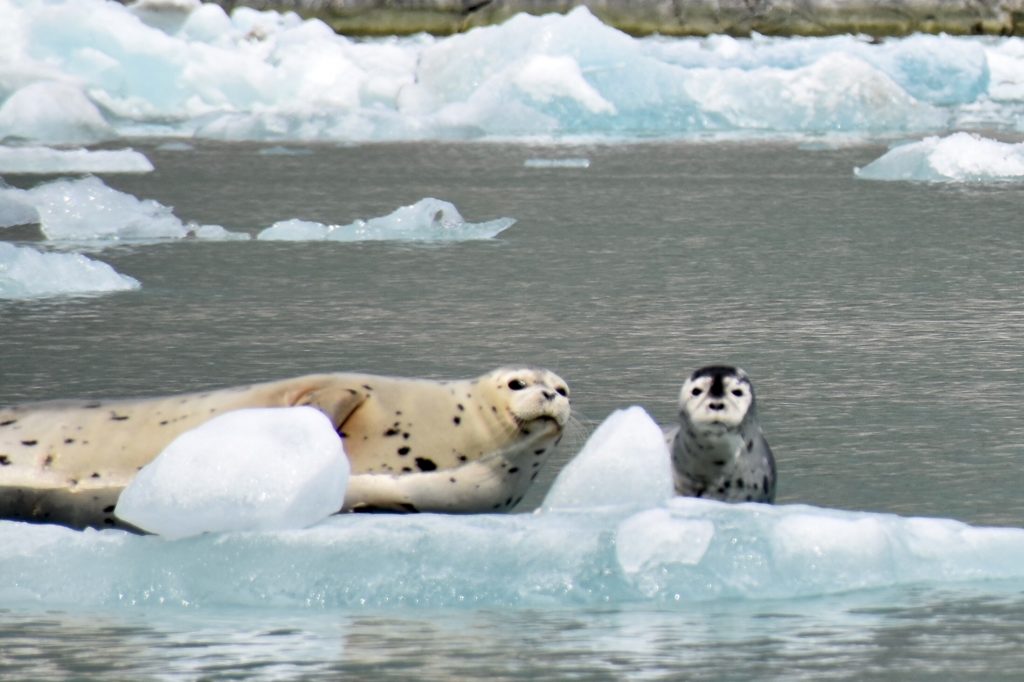
Seals floating in Endicott Arm near Dawes Glacier (Bill Ryan)
ALASKA’S FAUNA WERE ON FULL DISPLAY as the Osprey made her way to Juneau from Wrangell. Brown bears, seals, eagles and ice animals practically posed as we went by, a photographer’s dream.
We stocked up in Petersburg, a scenic, orderly fishing town proud of its founders’ Norwegian and Native heritage. Sally Dwyer, a longtime civic leader, gave us a fascinating VIP tour.
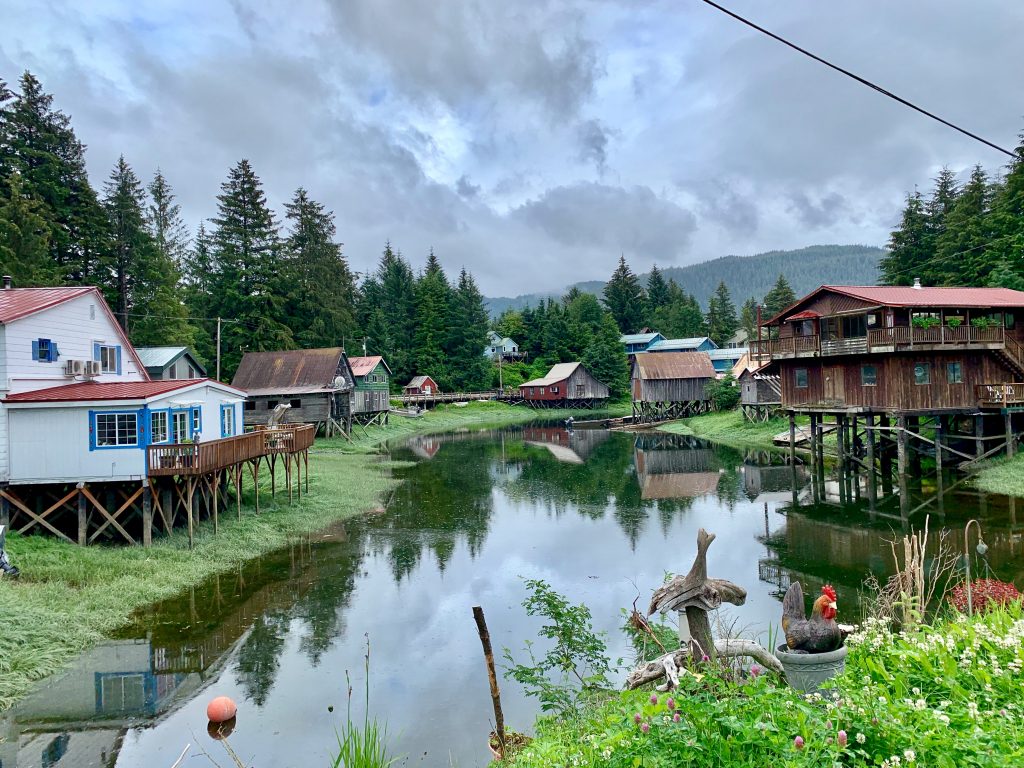
Houses along Petersburg’s Hammer Slough (Bill Ryan)
For the next five days we cruised into the wilderness to see animals, snow-capped mountains and glaciers, on a blessed run of sunny days. At night we anchored in protected coves, after reading reviews by other mariners and gingerly sounding the surrounding depths.
Entering Stephens Passage from Frederick Sound we crossed a virtual whale highway. We heard spouting and saw dozens of plumes in all directions, and from afar glimpsed a few tails reflecting sunlight as they flopped into the water.
Near shore, eagles were constantly overhead.

Bald eagle watching over Windham Bay (Bill Ryan)
At Hokham Bay we first encountered jagged icebergs calved from glaciers at the ends of Tracy Arm and Endicott Arm. Gleaming in the morning sun, some odd shapes suggested birds, lizards or dragons.
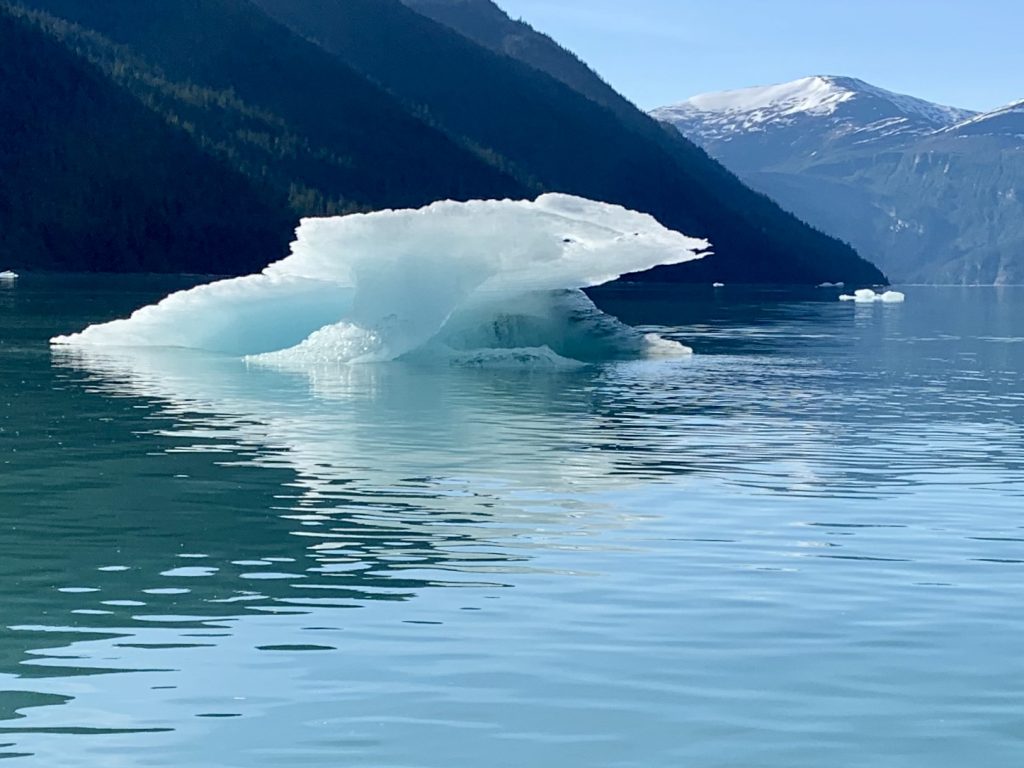
Ice menagerie: What manner of creature is this? (Bill Ryan)
Rising at 4 a.m. to meet the tide, we made our way up to the challenging entrance of Ford’s Terror inlet—named for a frightened sailor who navigated the roiling rapids in a rowboat—and at slack water went through carefully, into a secluded paradise enclosed by stunning high cliffs and waterfalls. No gargantuan cruise ships here.
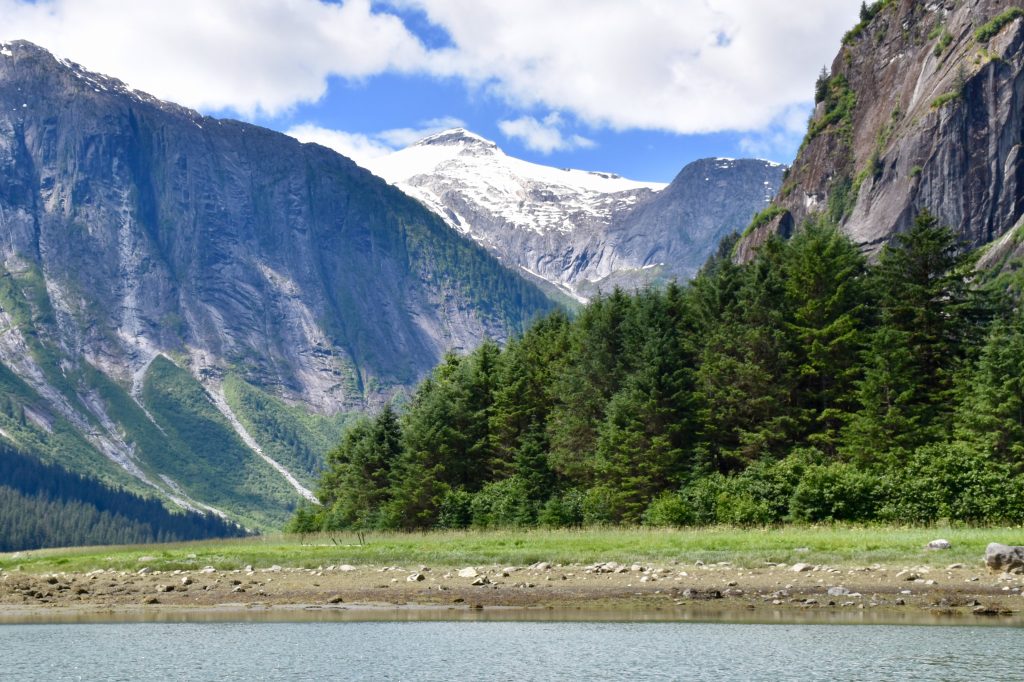
View from our anchorage at Ford’s Terror (Bill Ryan)
We stayed long enough for two short kayak rides to a beach at one end of this idyllic basin. Rounding a bend, I suddenly came upon a mama brown bear and two small cubs digging for crabs or clams. After backing off to avoid notice, I took pictures from the kayak, rueing my lack of a longer lens. The mother and cubs then swam across a rising creek and vanished in the woods.
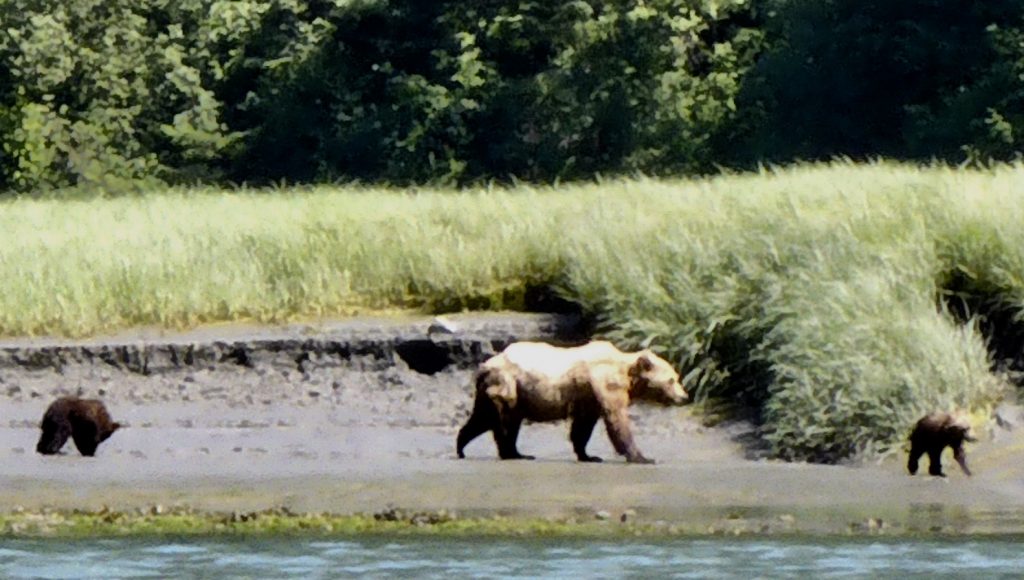
Brown bears dig the beach at Ford’s Terror (Bill Ryan)
When the tide was higher, I paddled back to their digging site, now an island, and found bear tracks and multiple holes in the sand.

Remnants of the three bears’ beach excursion (Bill Ryan)
The next day we continued up Endicott Arm to Dawes Glacier, weaving through a maze of small icebergs. Seals basked idly on many of these floats.
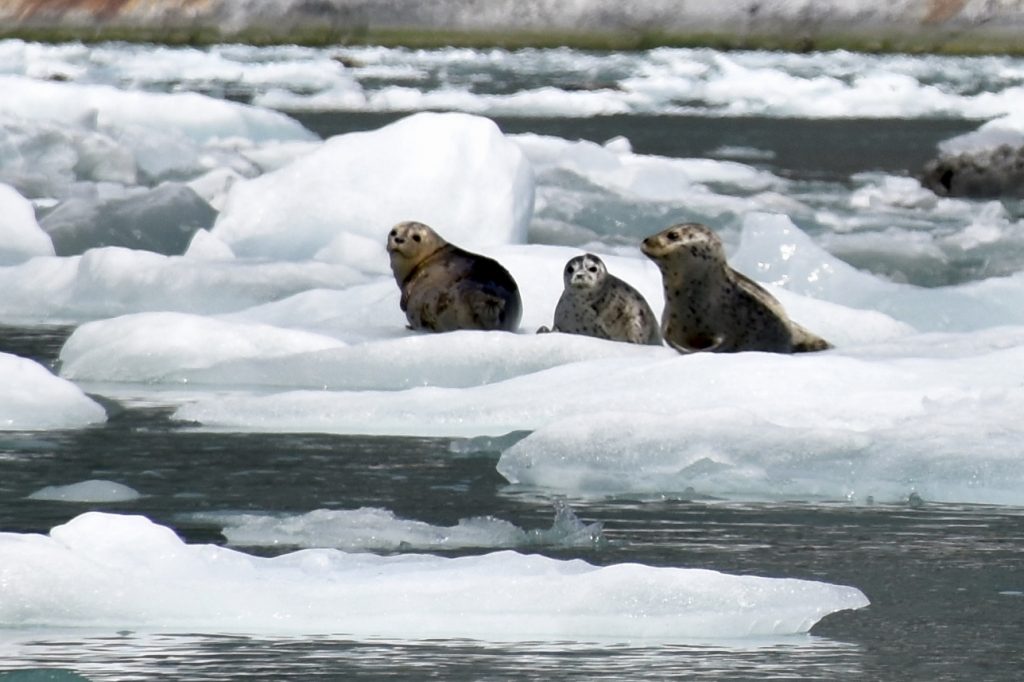
‘You looking at me?’ (Bill Ryan)
We got as close as we prudently could to the massive ice cliffs where the glacier meets the water, sharing the awing experience with kayakers from a swanky yacht.
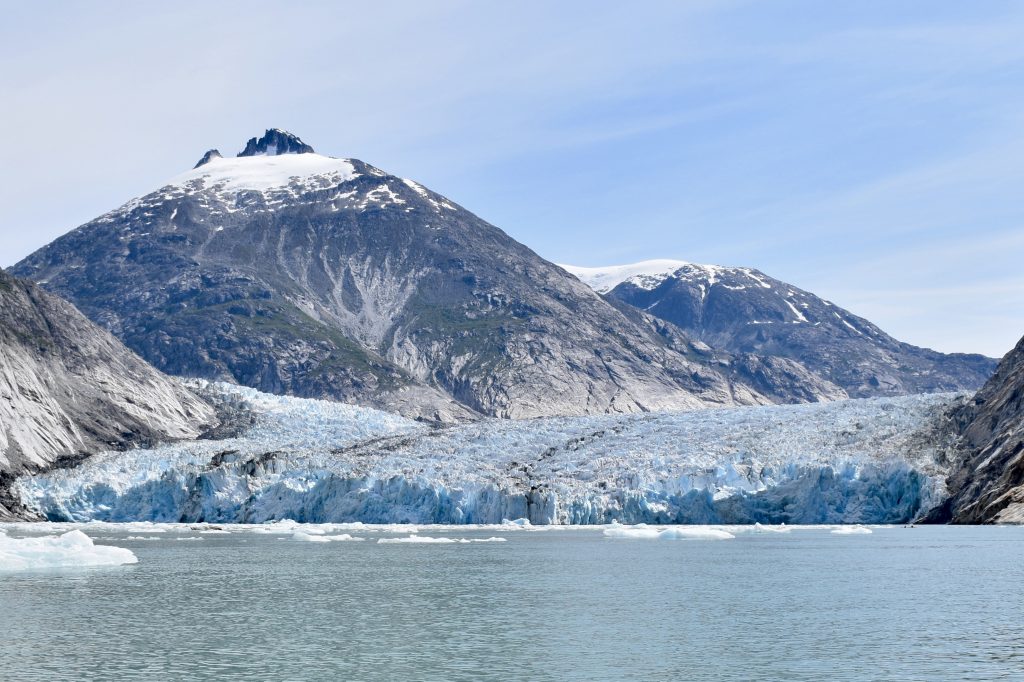
Dawes Glacier (Photo: Bill Ryan)
We anchored for the night near the entrance of Tracy Arm, another fjord famous for icebergs, sharing the cove with tour boats and pleasure craft. As we pulled in, we spotted a brown bear family walking along slowly along the shore, as I and other tourists in inflatable rafts snapped pictures. Then they saw us and slipped behind the tall grass.

Foraging bears seem at first not to notice the spectators offshore (Bill Ryan)

Now they see us (Bill Ryan)
A trio of eagles watched from a rock as we pulled out into windy Stephens Passage, where we faced two- to three-foot waves from several directions. Our ride toward Juneau was bumpy but manageable, and the mountains on all sides were magnificent.

Eagles rest between fishing flights (Bill Ryan)
On our last night out in this leg of Osprey’s journey we anchored by a beach in a tranquil cove off Admiralty Island, reputed home to North America’s largest brown bear population. No creatures were sighted onshore, but in a sunset that lasted past midnight we listened to a nearby whale’s spouting and splashing, sounds that boomed across the water. Suddenly there was a commotion, and close behind our stern up popped two seals swirling in a close embrace.
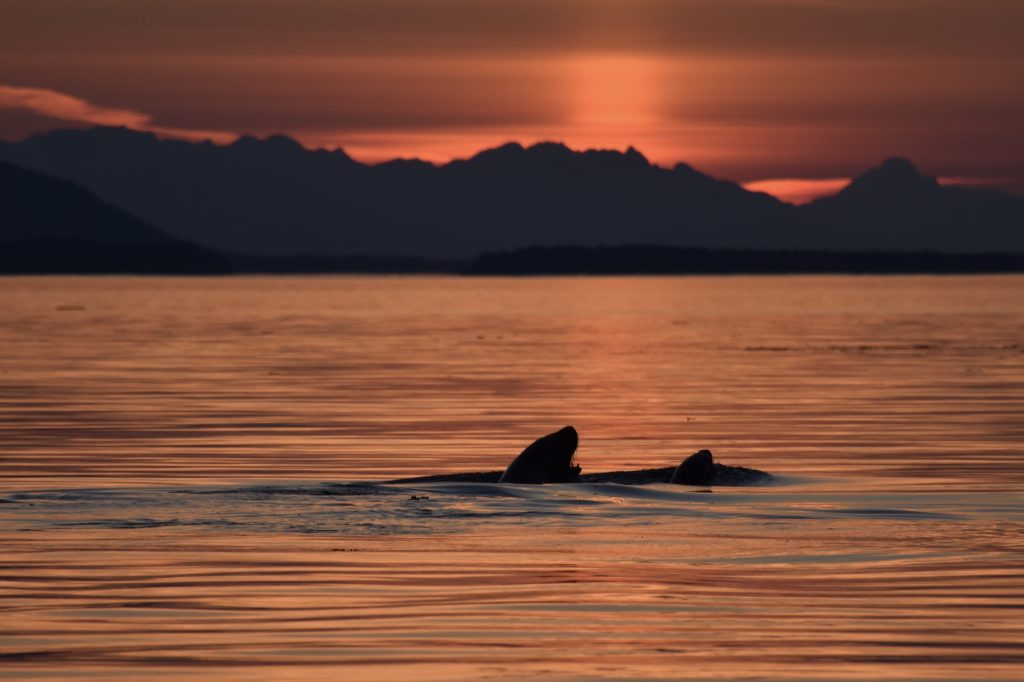
Seal pas de deux in the sunset (Bill Ryan)
After a couple of days’ respite and a crew change in Juneau, brother Andy and his cozy C-Dory will head off to the natural glories of Glacier Bay. Bon voyage. Quelle aventure.
Wrangell and the boat next door
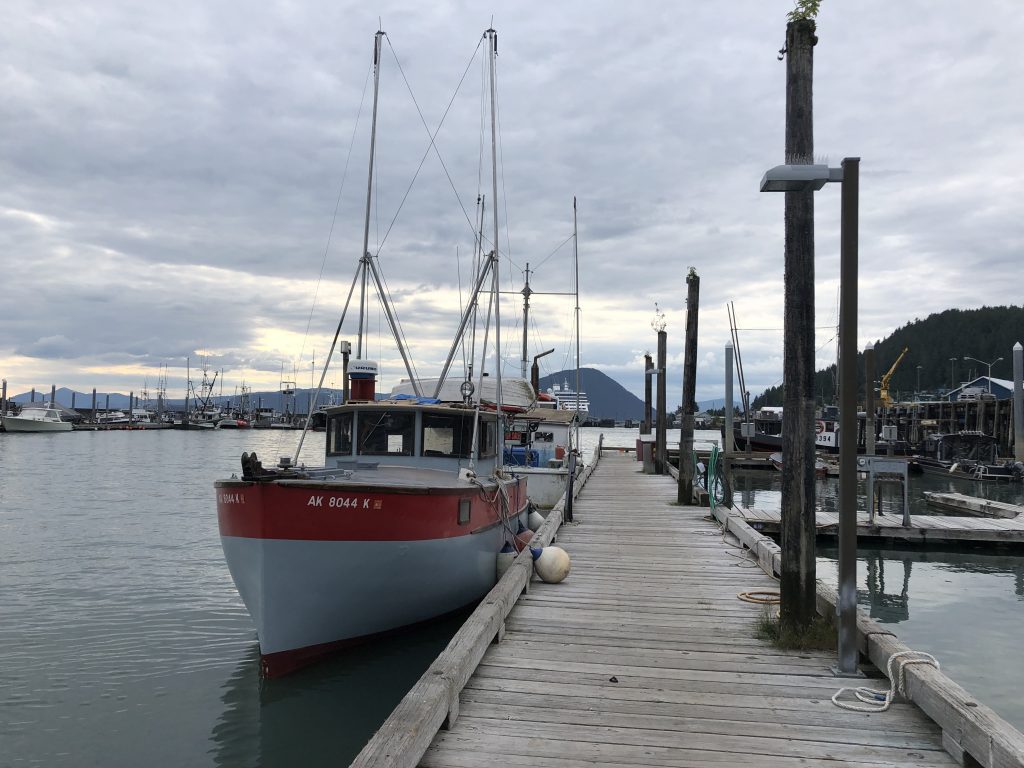
Hand troller Mij at Wrangell
BEHIND US ON THE WRANGELL DOCK this afternoon was the 26-foot hand troller Mij. Her owner, 29-year-old Brittaney Schunzel was replacing a damaged rub rail.
Trollers pull long fishing lines behind them, attached to “troll poles”—outriggers—extending from either side of the boat. Power trollers, which pay more for their licenses, get to put out four lines and use mechanically powered reels to pull them in. Hand trollers are only allowed two lines, which they crank in by hand.
Trolling for salmon, by hand or power, is hard work. The fishing lines running from the troll poles are from nine to 28 fathoms long—a fathom is six feet—and shorter leaders with hooks at the ends are attached every nine feet. That’s as many as 36 lures on a hand troller, each of which may have hooked a salmon.
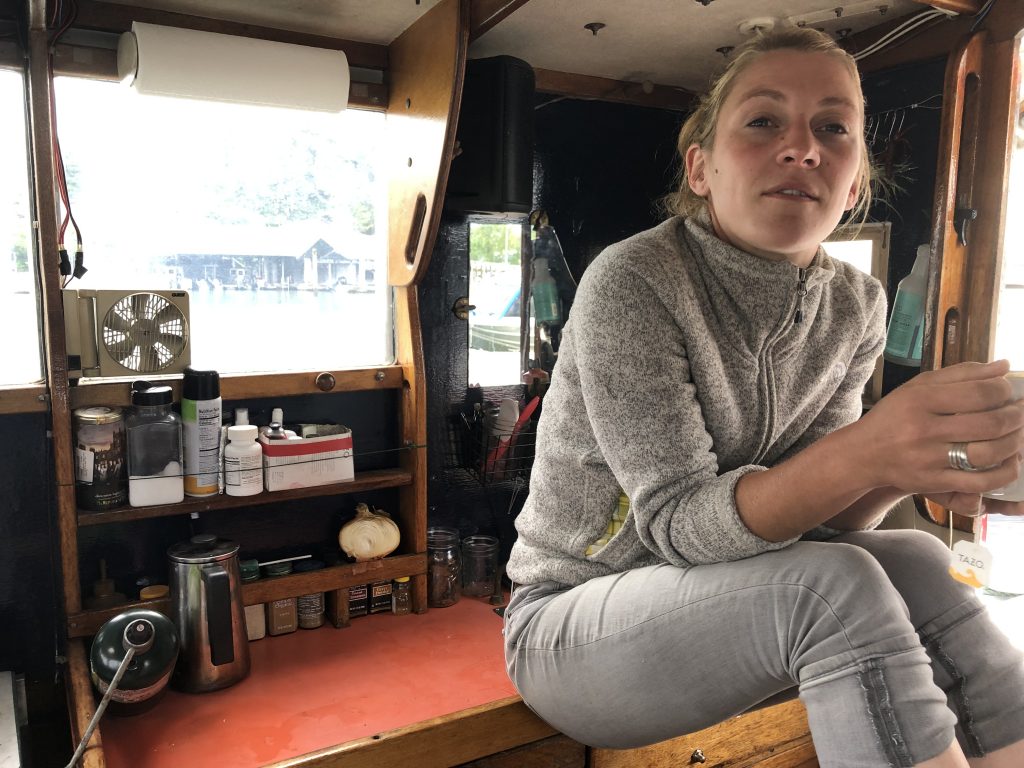
Skipper Schunzel in Mij’s galley
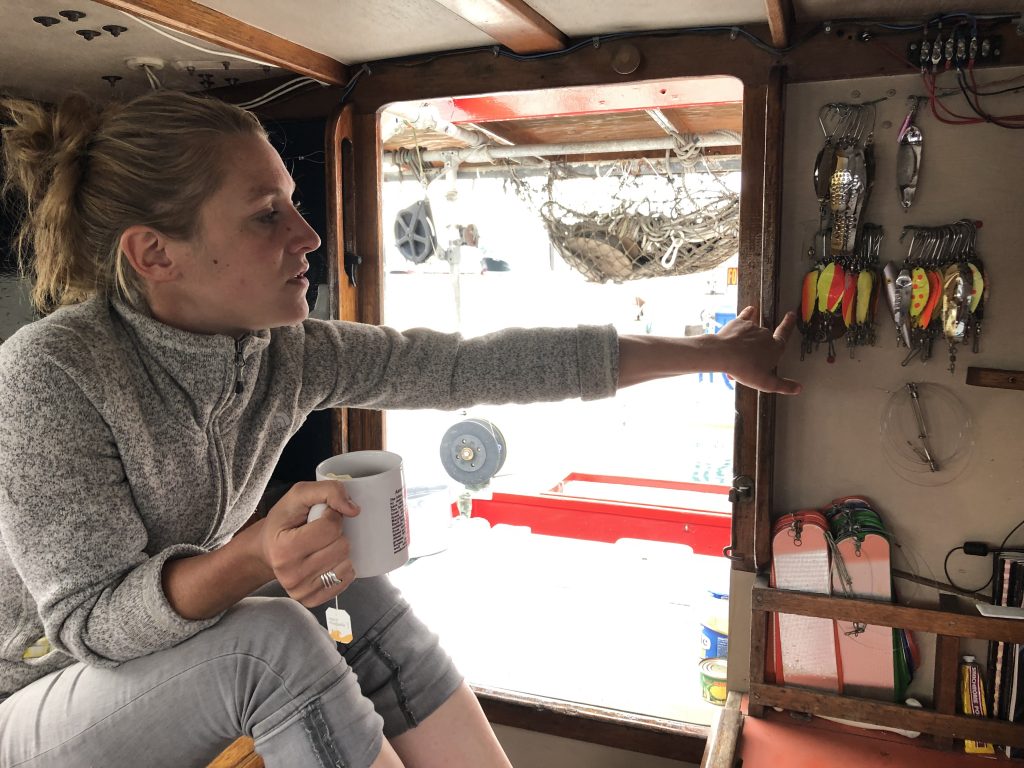
Brittaney shows lures for king and coho salmon
From July through mid-September Brittaney fishes for coho and king salmon, and she’s been making a living at it. Last year buyers were paying fishers $8.25 a pound for king salmon, and as much as $2.60 a pound for coho. She hopes this year’s prices will be as good as last’s; but this year her season will be cut short in August, when she’ll fly up to Anchorage to begin nursing school.
Will Brittaney be able to combine nursing and fishing? She hopes so. She loves her cozy, immaculate little boat and can’t even begin to think about selling her. Just maybe, she thinks, when school is done, she’ll be able to find nursing work in Wrangell, and live aboard Mij.
It makes me very happy to think Brittaney might be able to pull that off.
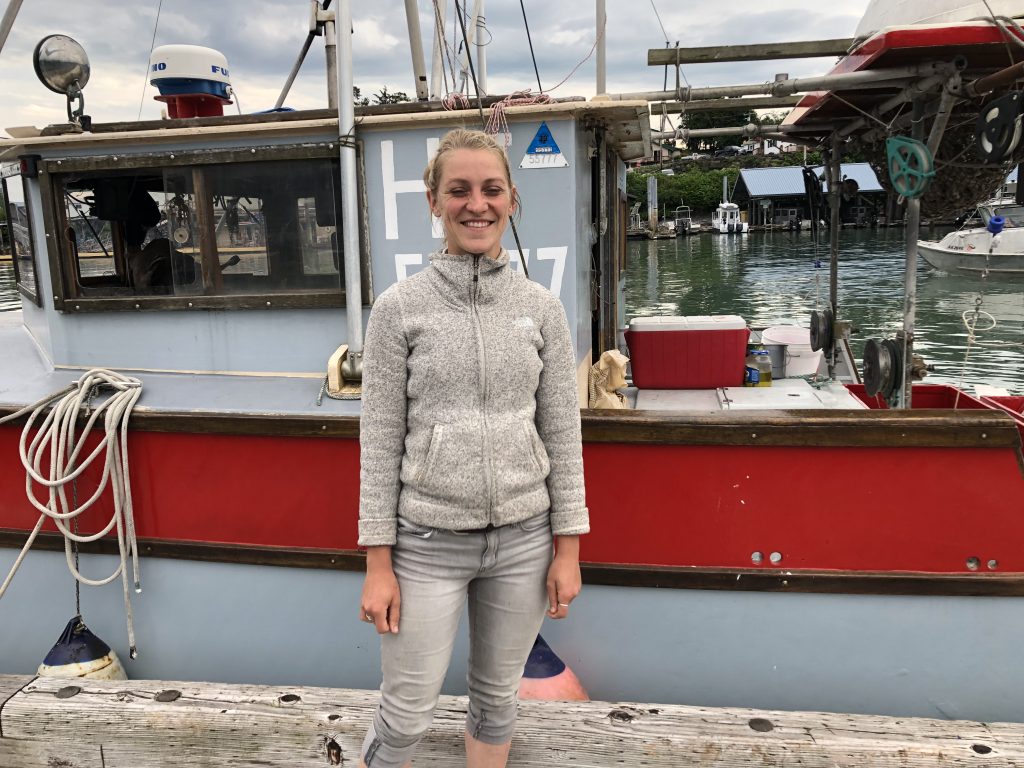
Brittaney and Mij
Since I last posted, Bill and I have motored from Knutson Cove to anchorages at Meyers Chuck (where longtime resident Cassy delivered her delicious homemade cinnamon rolls right to our boat), Thorne Bay and Anan Bay last night (where we saw our first brown bear.)
Along the way we have also seen:
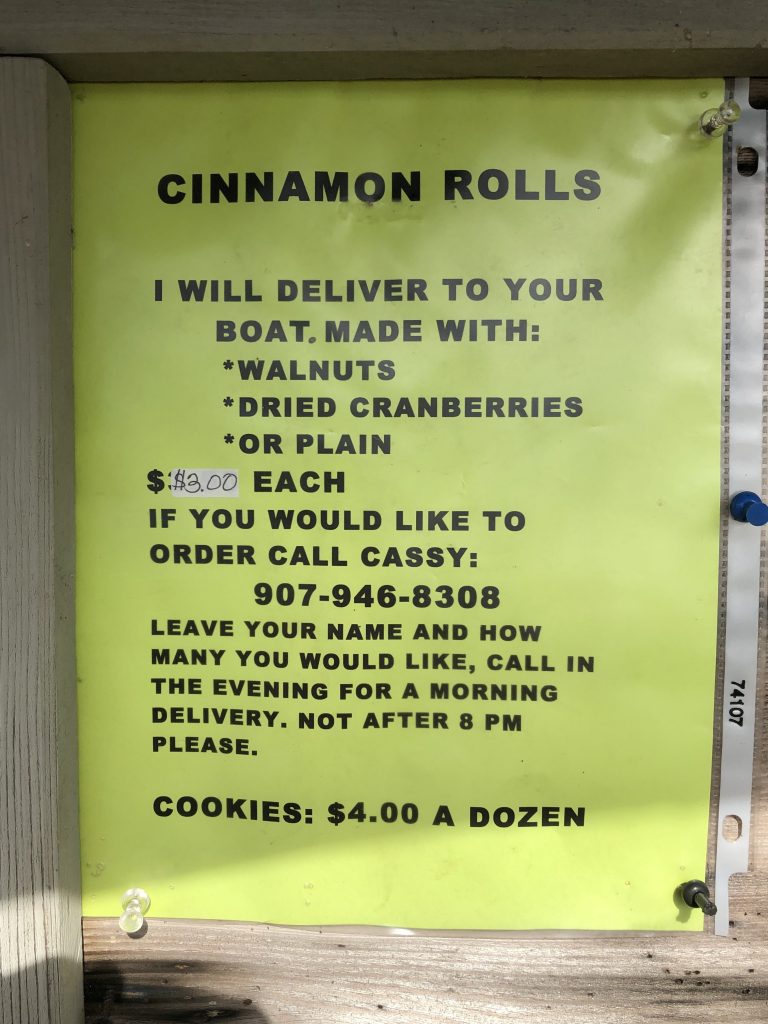
Meyers Chuck’s most famous attraction
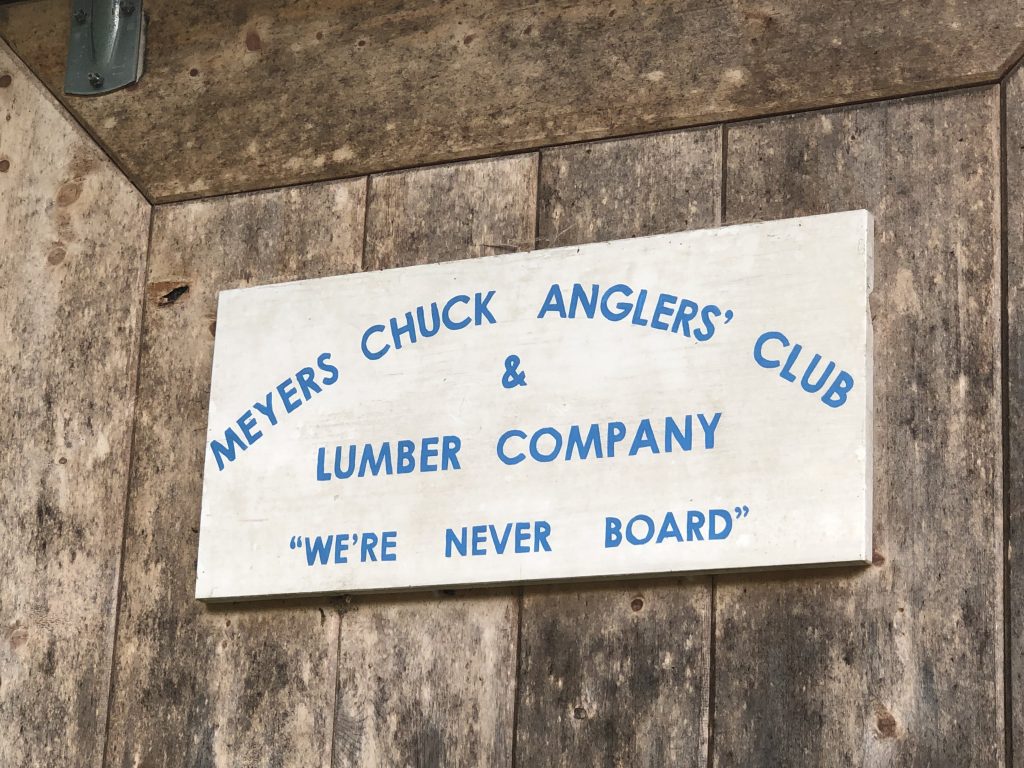
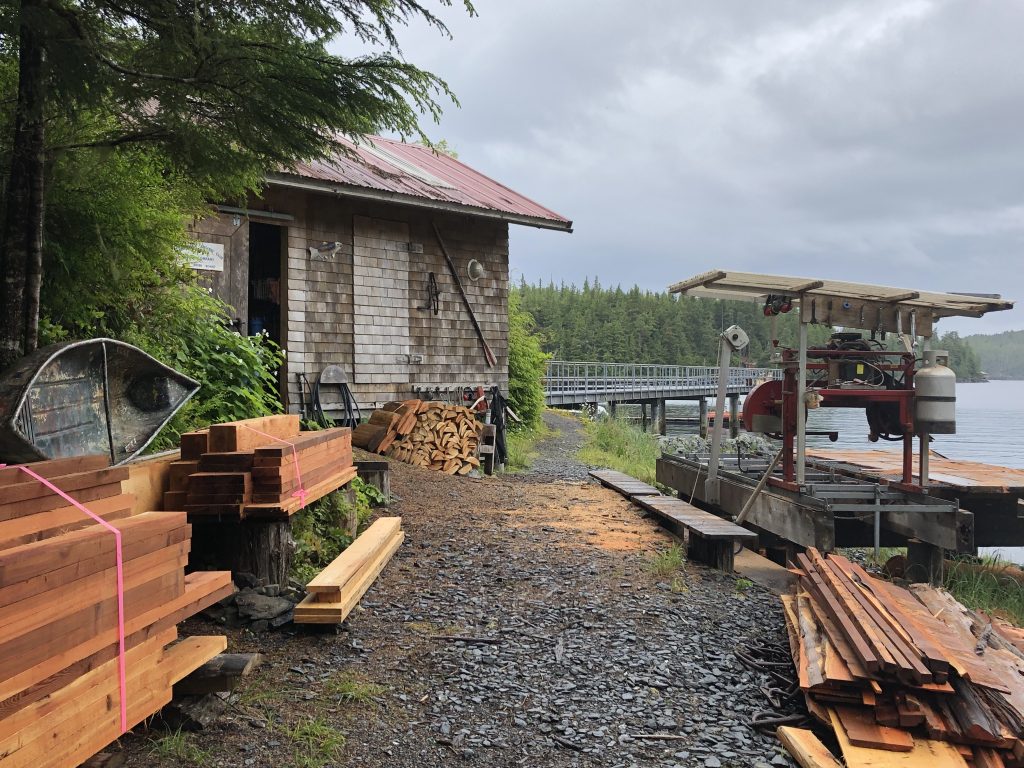
Small lumber mill at Meyers Chuck
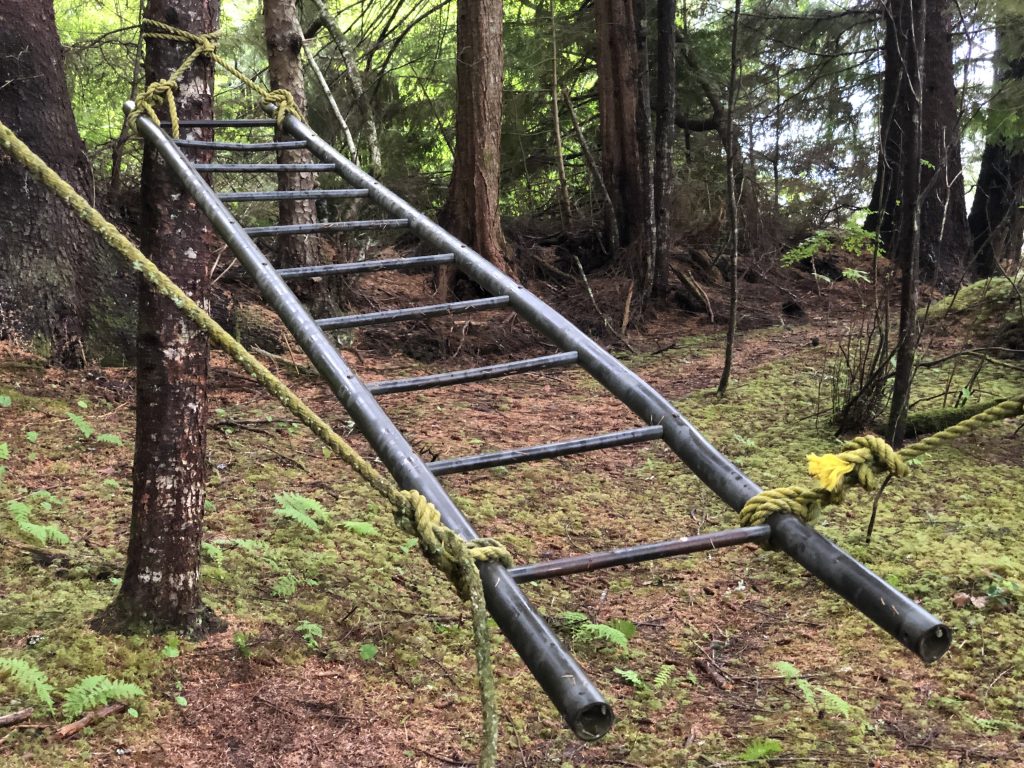
Playground apparatus at Meyers Chuck
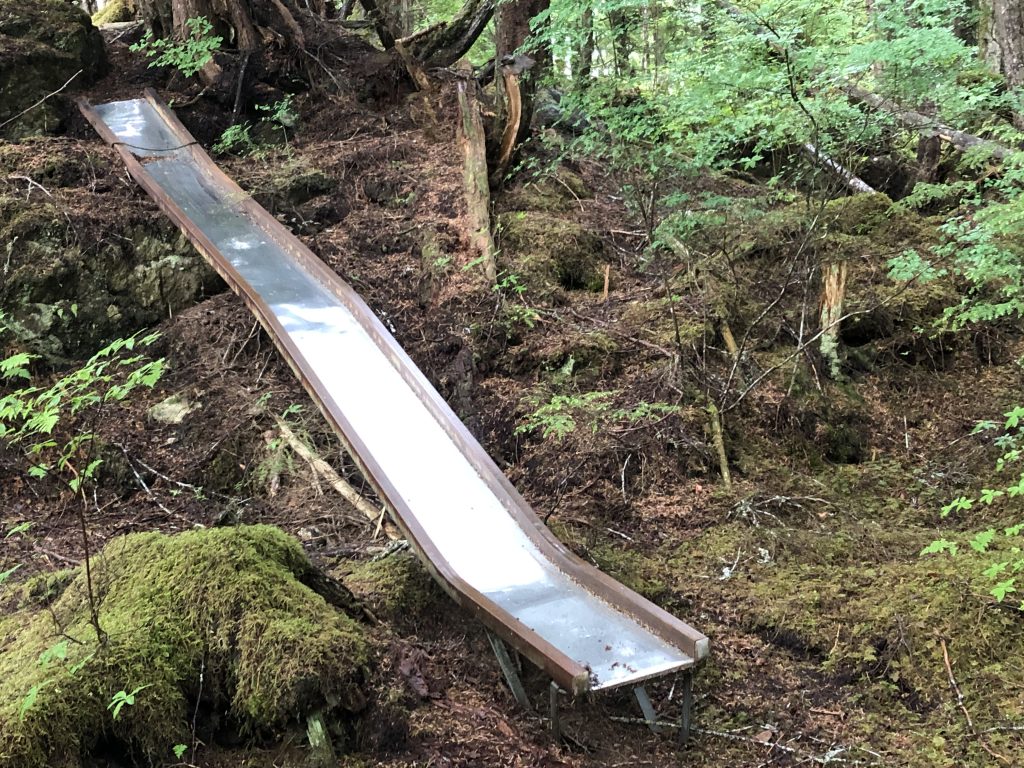
… and a slide

… and a teeter totter
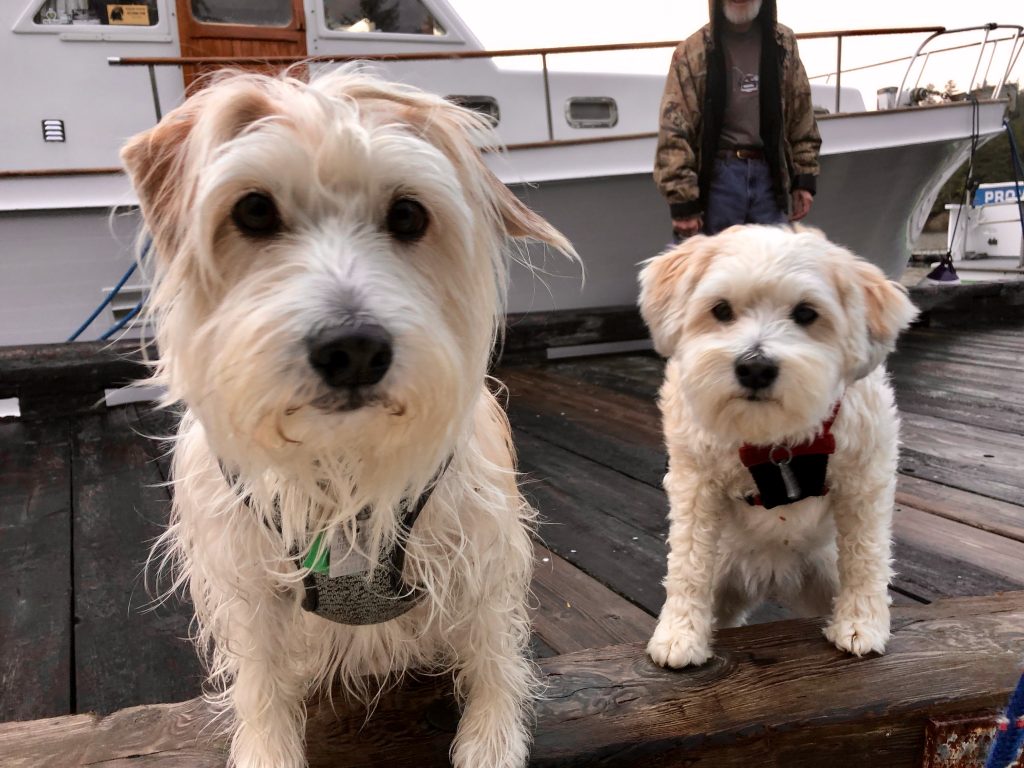
Visitors at the Meyers Chuck Dock

Andy selfie at Thorne Bay
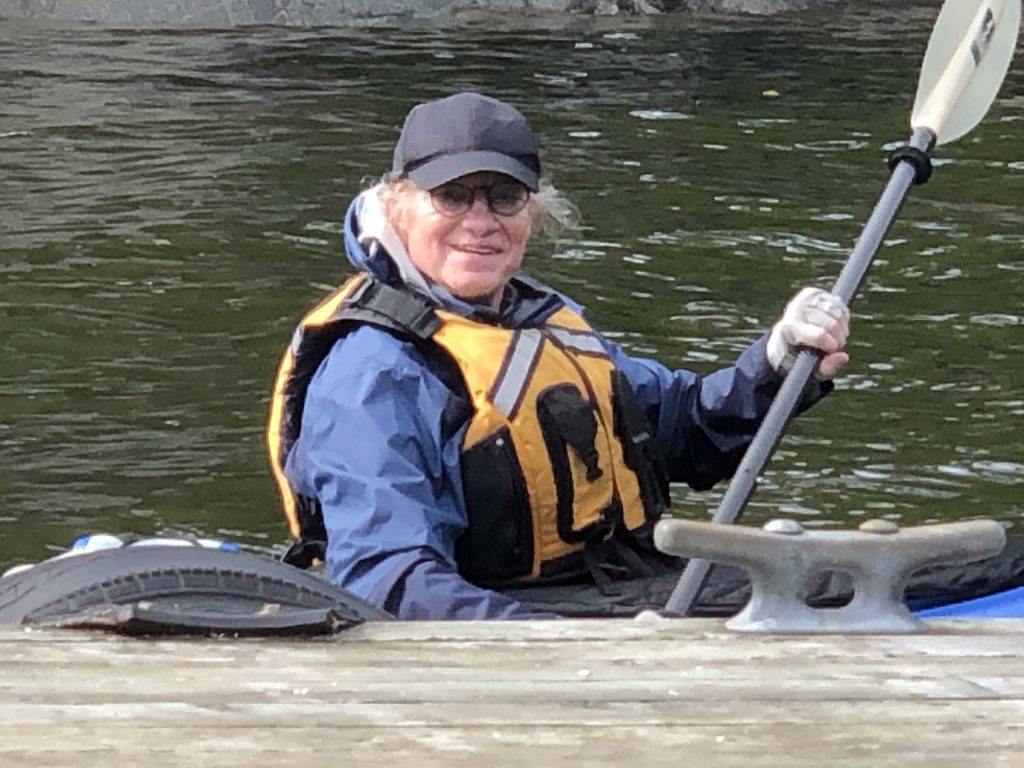
Bill launching from the float at Anan Bay
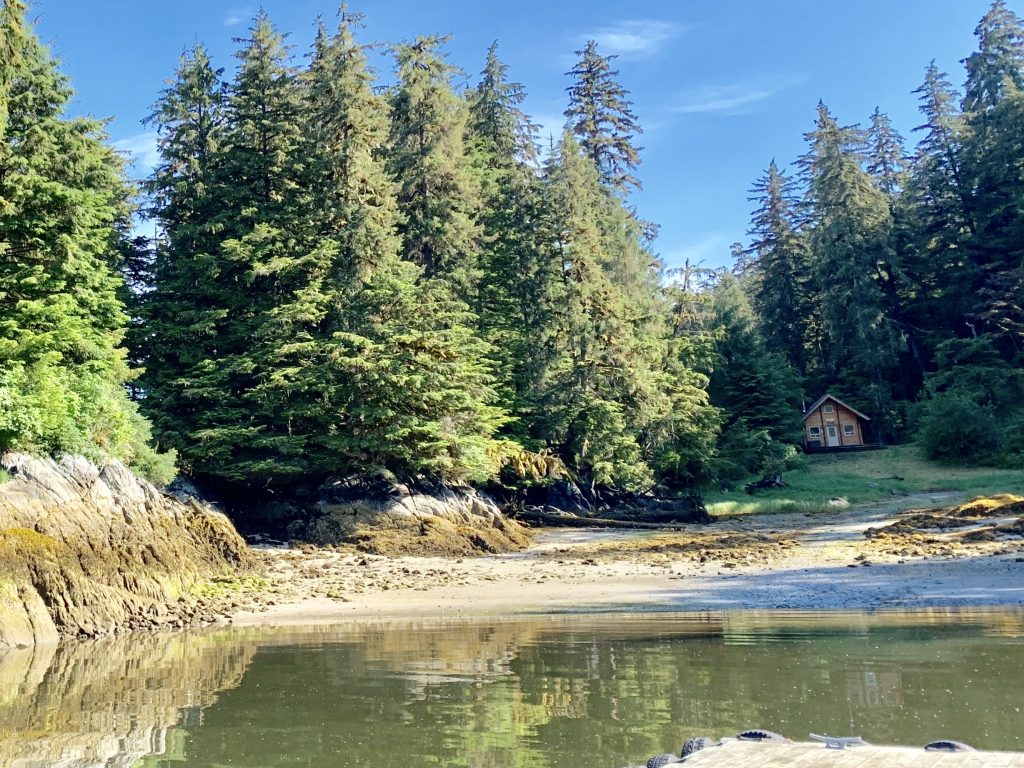
Forest Service Cabin at Anan Bay (Bill Ryan)

Sunset at Anan Bay (Bill Ryan)

Morning view near Berg Bay (Bill Ryan)
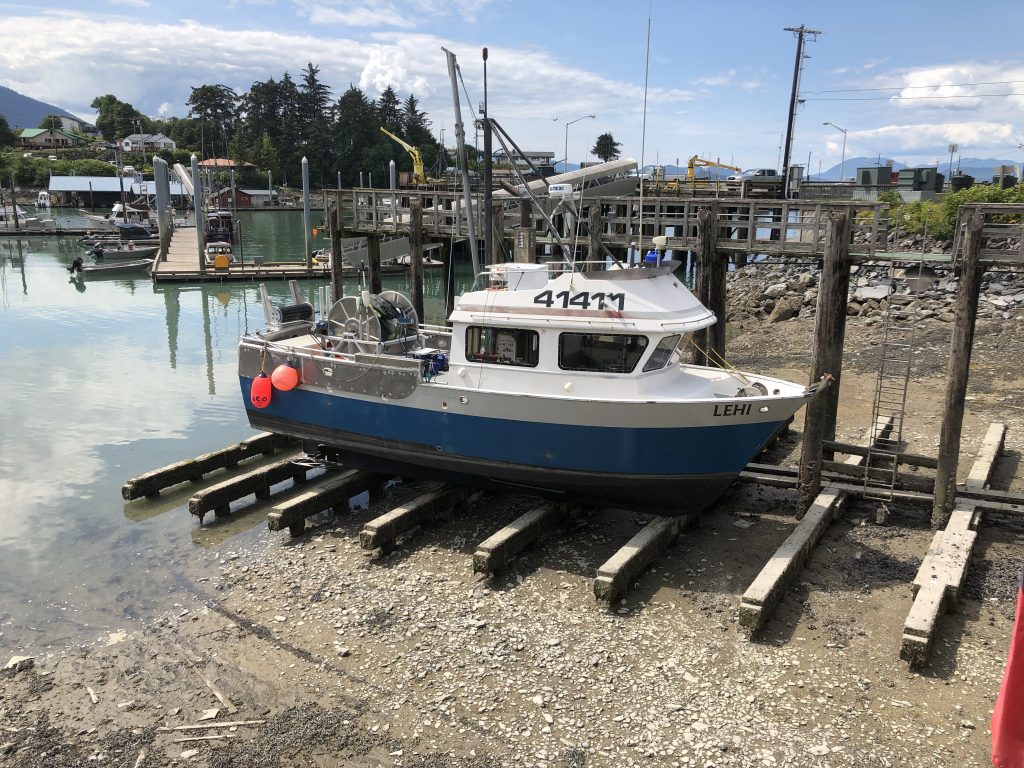
Repairs on tidal grid, Wrangell
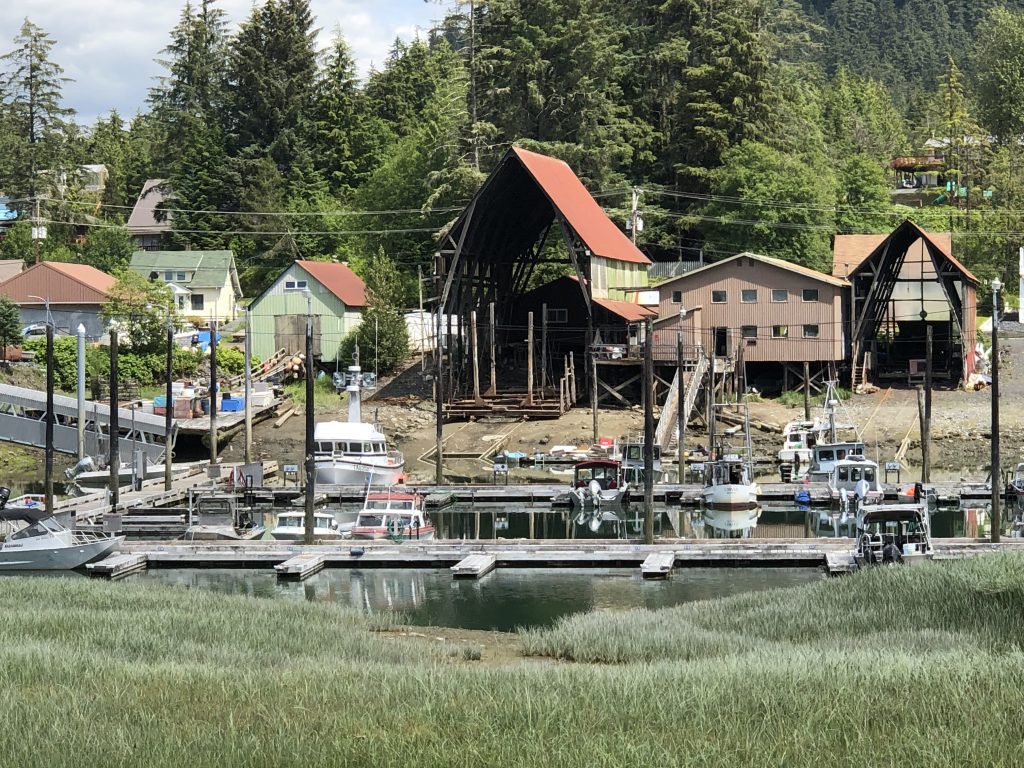
View across inner harbor, Wrangell
Misty Fiords passage
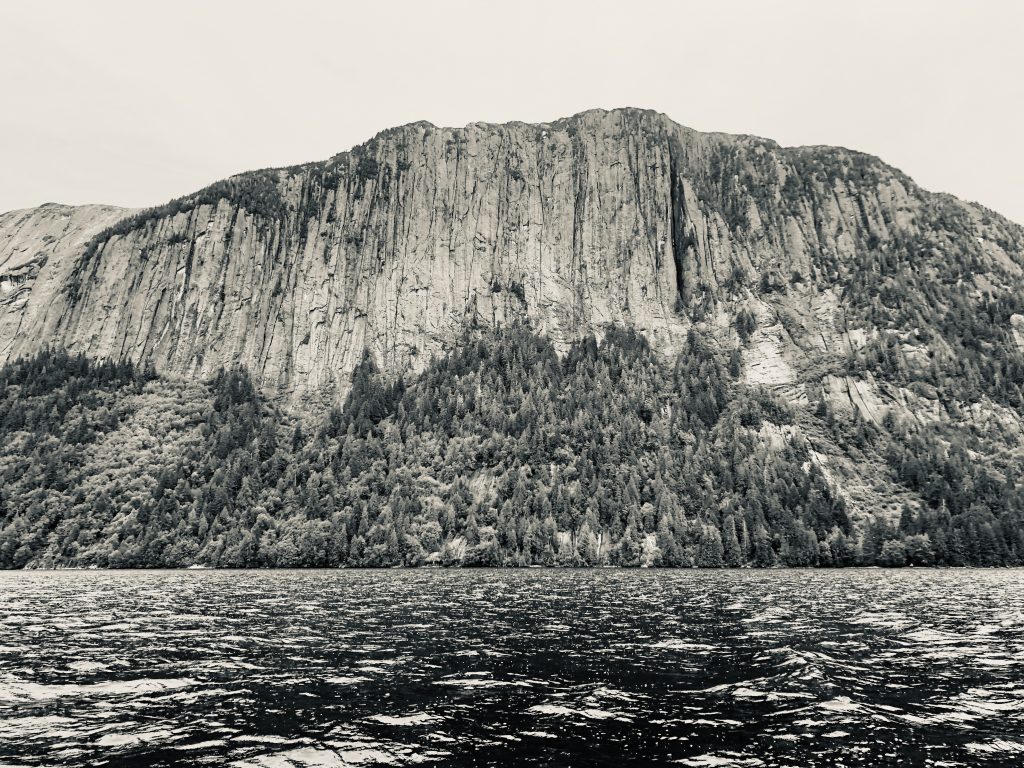
Granite cliff in Punchbowl Cove, Misty Fiords
BILL AND I LEFT KETCHIKAN Saturday, June 15, heading counterclockwise in a 3-foot chop around big Revillagigedo Island, into Behm Canal and Misty Fiords National Monument.
Our first night was at Winstanley Anchorage, where getting the hook set was complicated by a full moon bringing a nearly 20-foot tidal range. Anchoring has been a tricky business for us in the deep, steep-sided inlets of Misty Fiords. But in each of the places we’ve anchored, we have been able to find areas shallow areas where we felt secure.
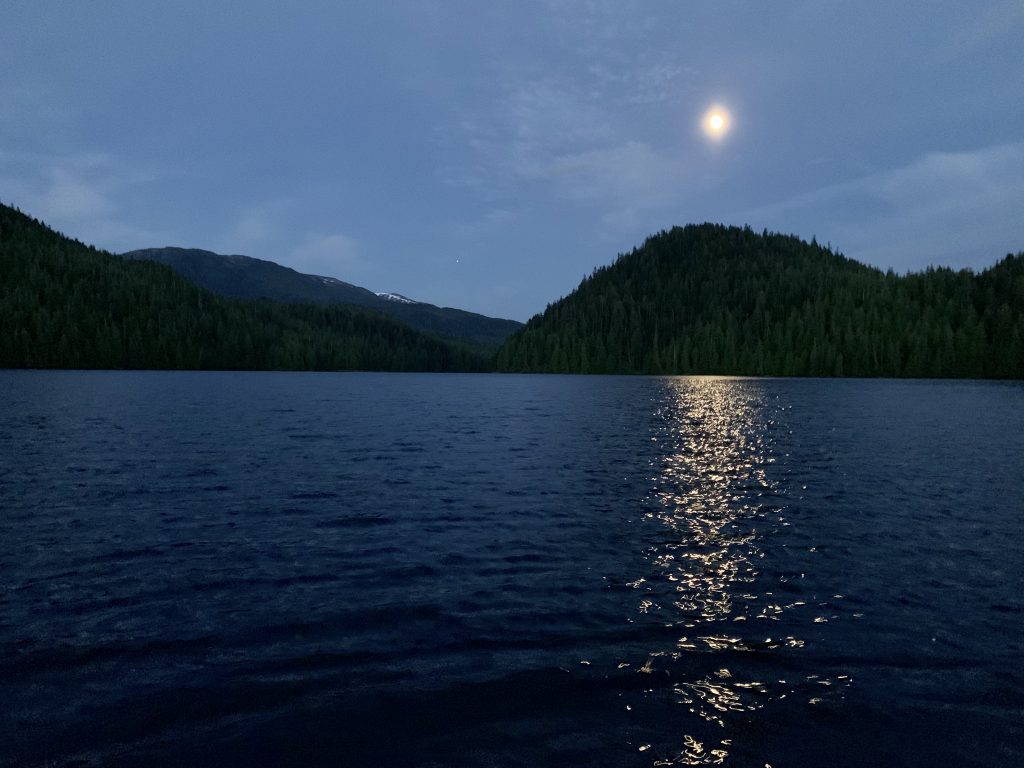
Winstanley Anchorage under waxing gibbous moon. (Bill Ryan)
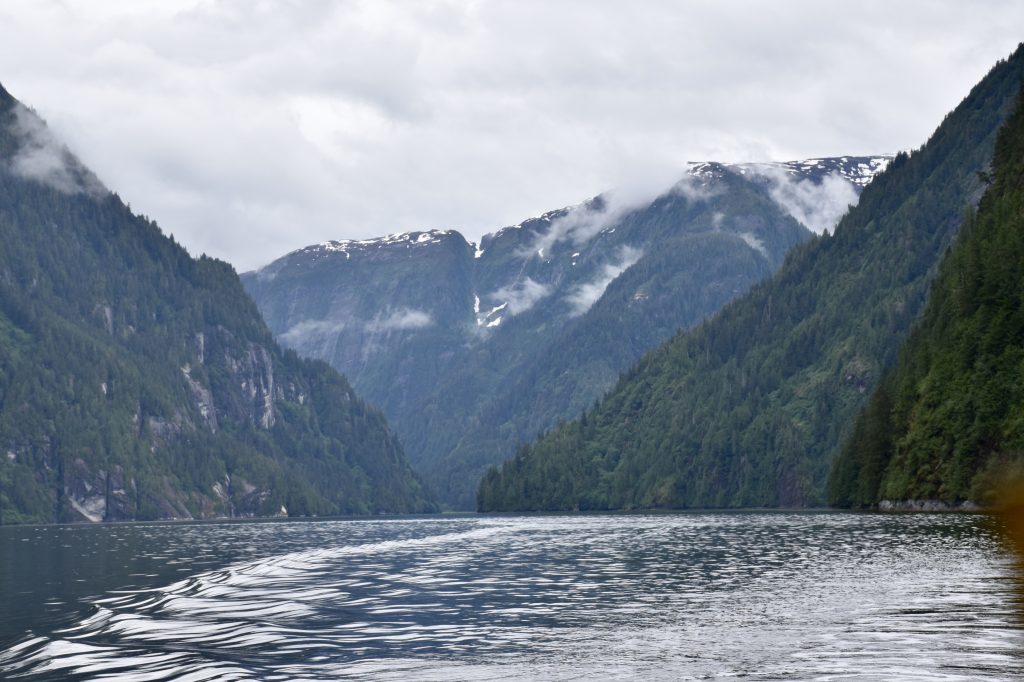
View into Walker Cove. (Bill Ryan)

In Walker cove. (Bill Ryan)

In Walker Cove

Walker Cove anchorage
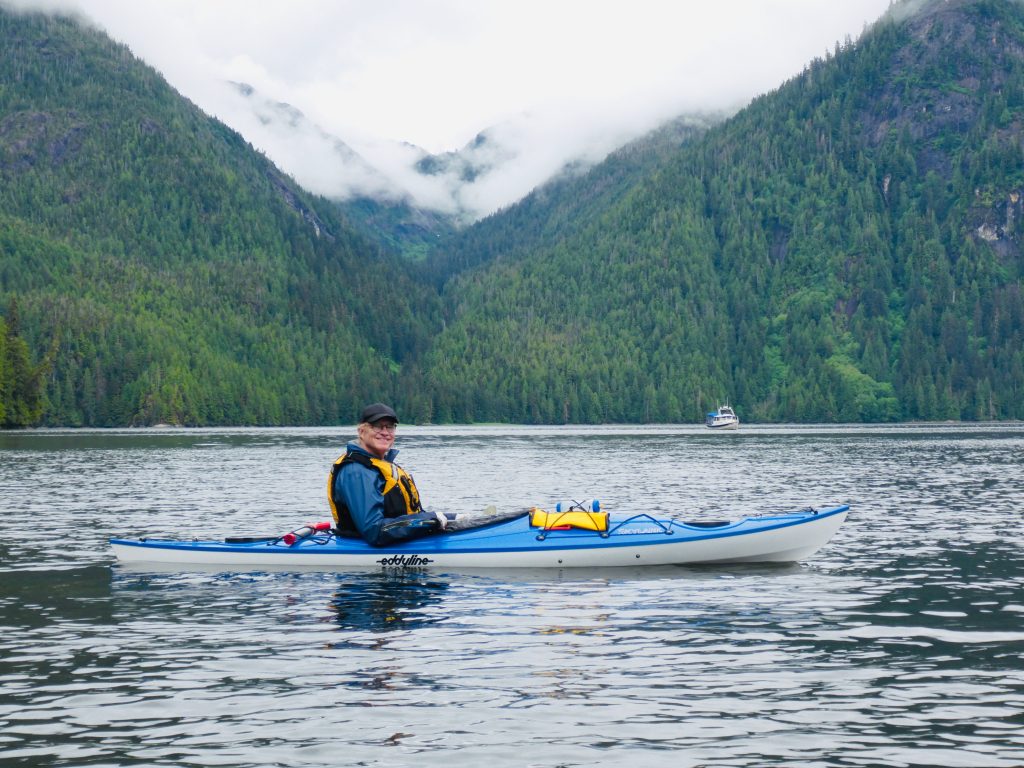
Bill Ryan, in Walker Cove
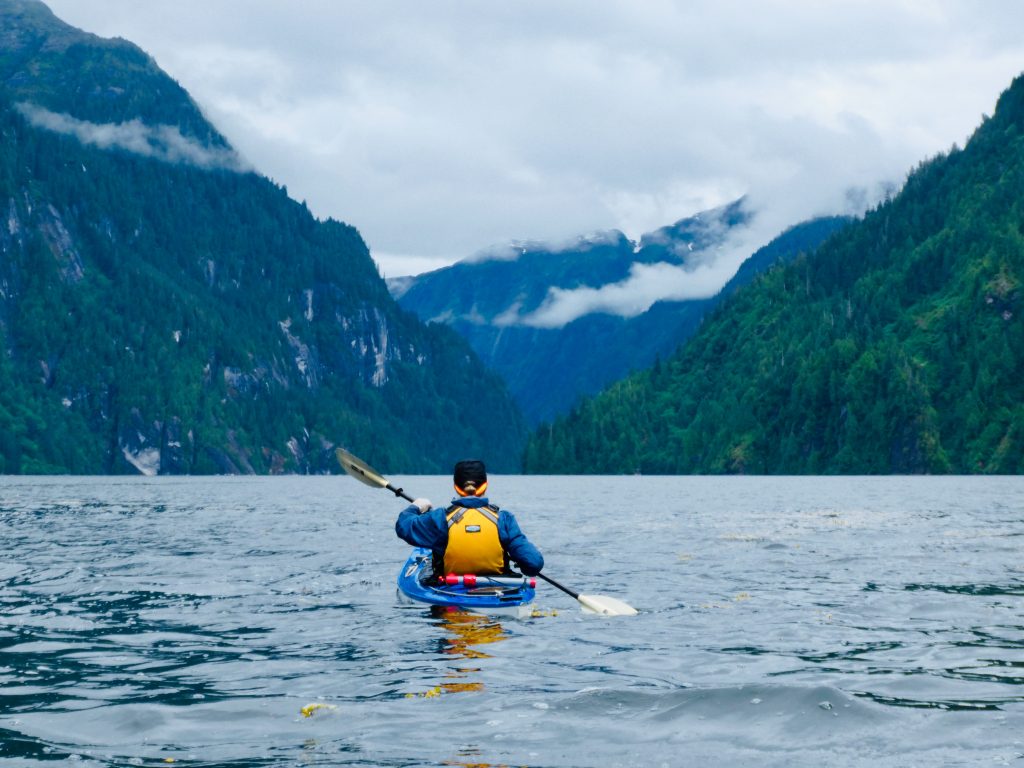
Bill, in Walker Cove
After a long, rough passage down Behm Canal yesterday, we arrived at friendly Knutson Cove Marina (really nice people), in the hamlet of Clover Pass, where we tied up for the night. We’re gassed up now and heading out—for Meyers Chuck, about 26 NM to the northwest.

Knutson Cove Marina (Bill Ryan)
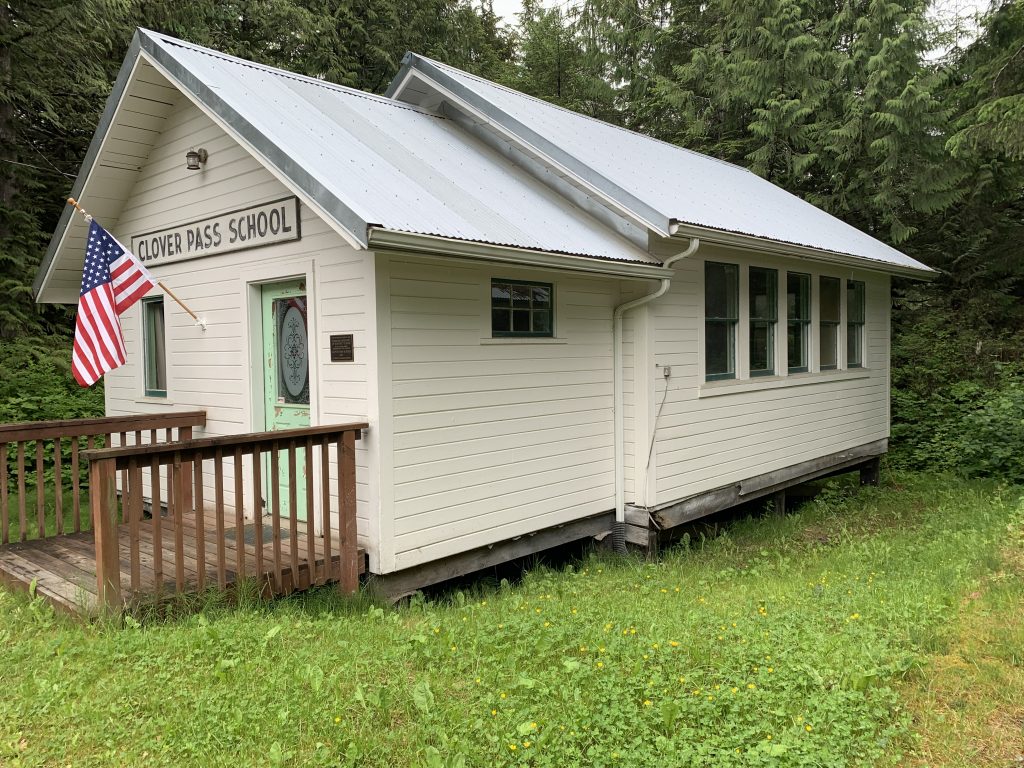
Clover Pass School (Bill Ryan)
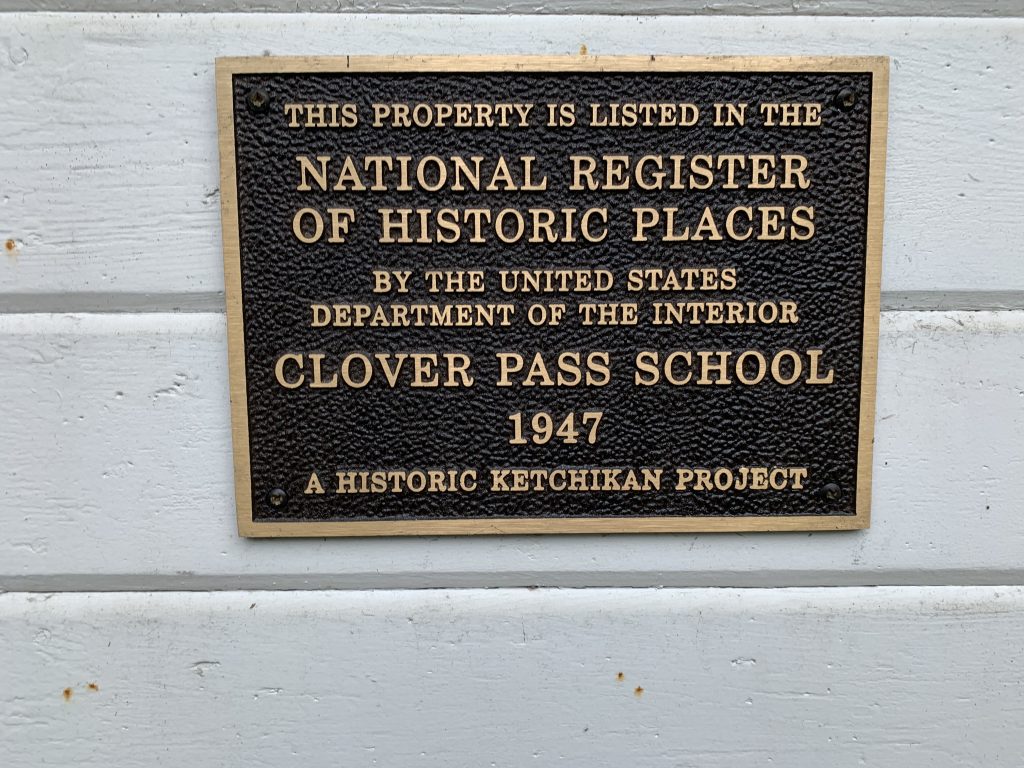
Clover Pass School (Bill Ryan)
Crew change in Ketchikan
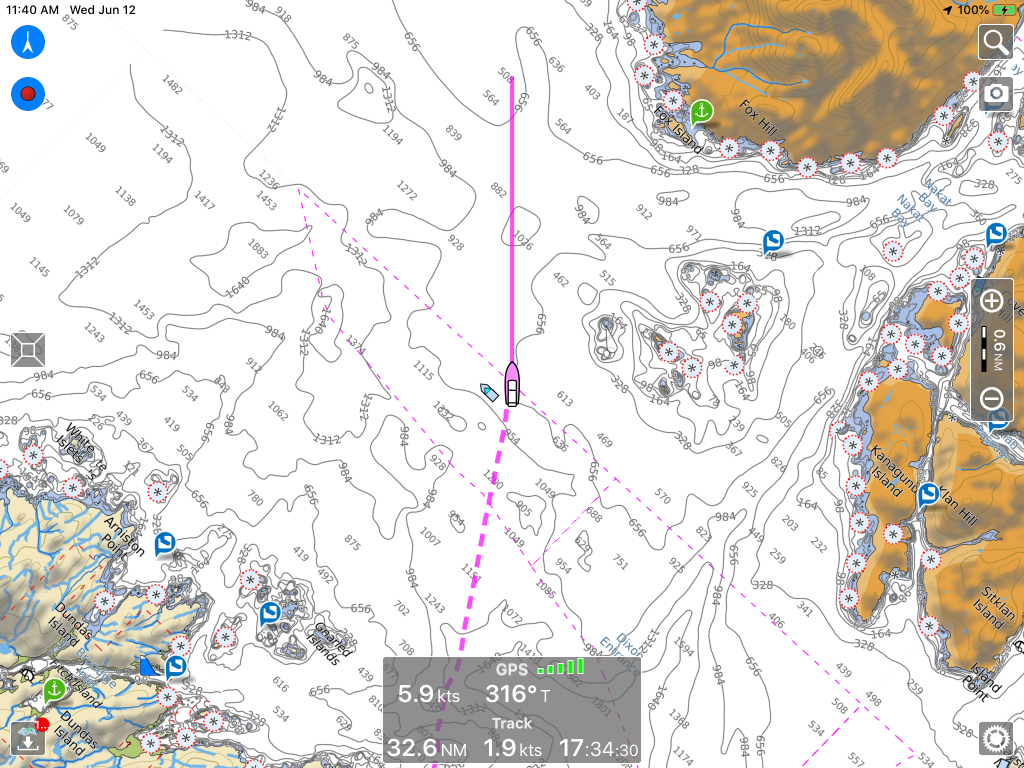
Crossing the border into Alaska
I’M SLEEPING ASHORE TONIGHT in a room my brother Bill rented at the Inn at Creek Street, in Ketchikan. Sam Farmer and I reached This Southeast Alaska city at 8 this morning, and Bill flew in from New York later in the day. Sam flies out tomorrow, and Bill and I head for Misty Fiords National Monument.
Ketchikan was bustling today, with tourists from at least three enormous cruise ships filling the streets, and boats competing in the 750-mile R2AK (Race to Alaska) race were beginning to trickle in. On the waterfront shuttle bus I met a crew member from the Sail Like a Girl team, winner of last year’s race. This year they came in fourth, she told me—would have finished third, but they broke a stay. Using only human and wind power, these intrepid racers started at Victoria, B.C. six days after the Osprey, with its twin 50 hp motors, left Kenmore. Some of them beat us here by a day.
Along the way, from Prince Rupert to Ketchikan, we saw:
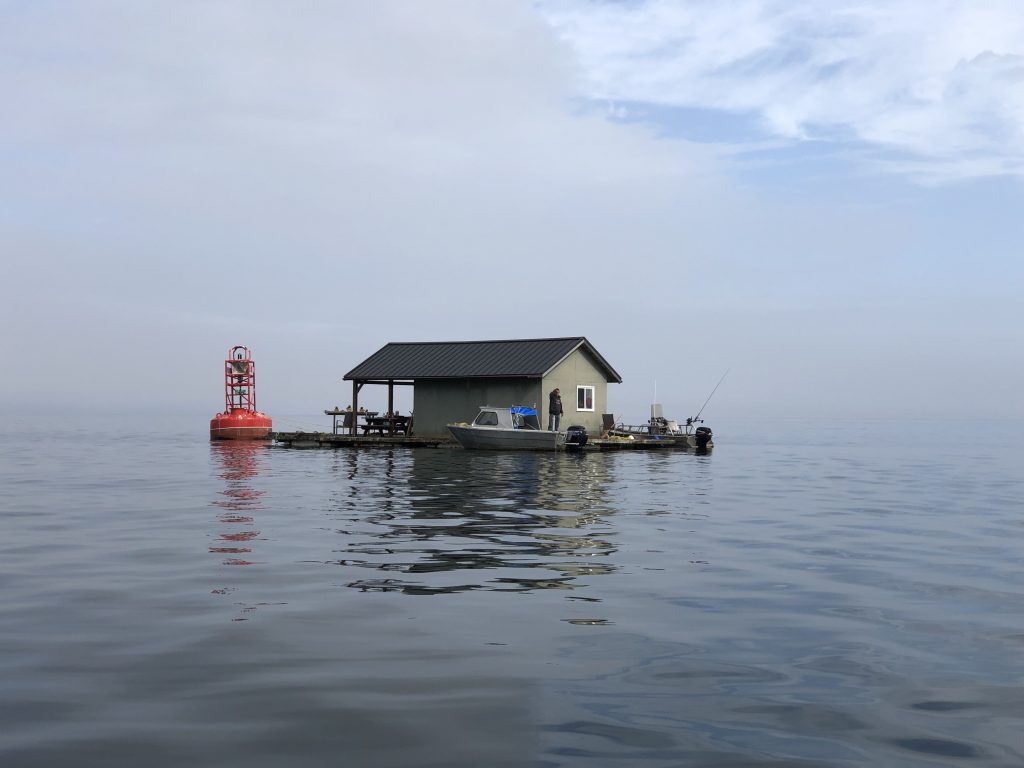
Floating house tied to channel marker in Chatham Sound
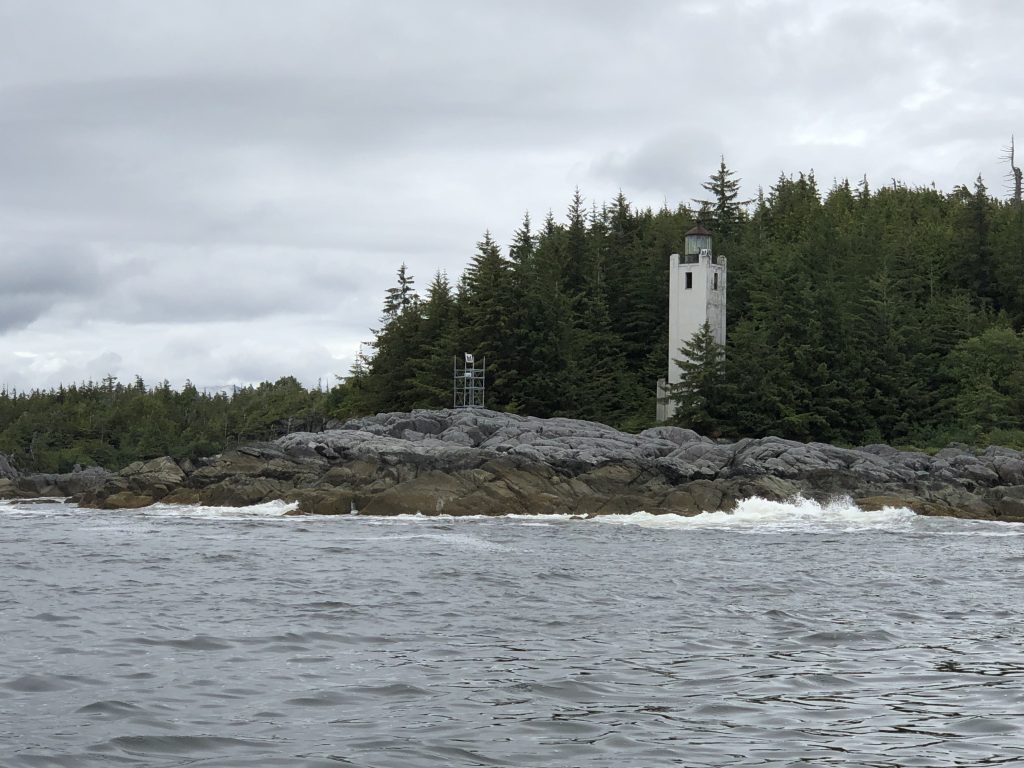
Cape Fox Light

In Foggy Bay
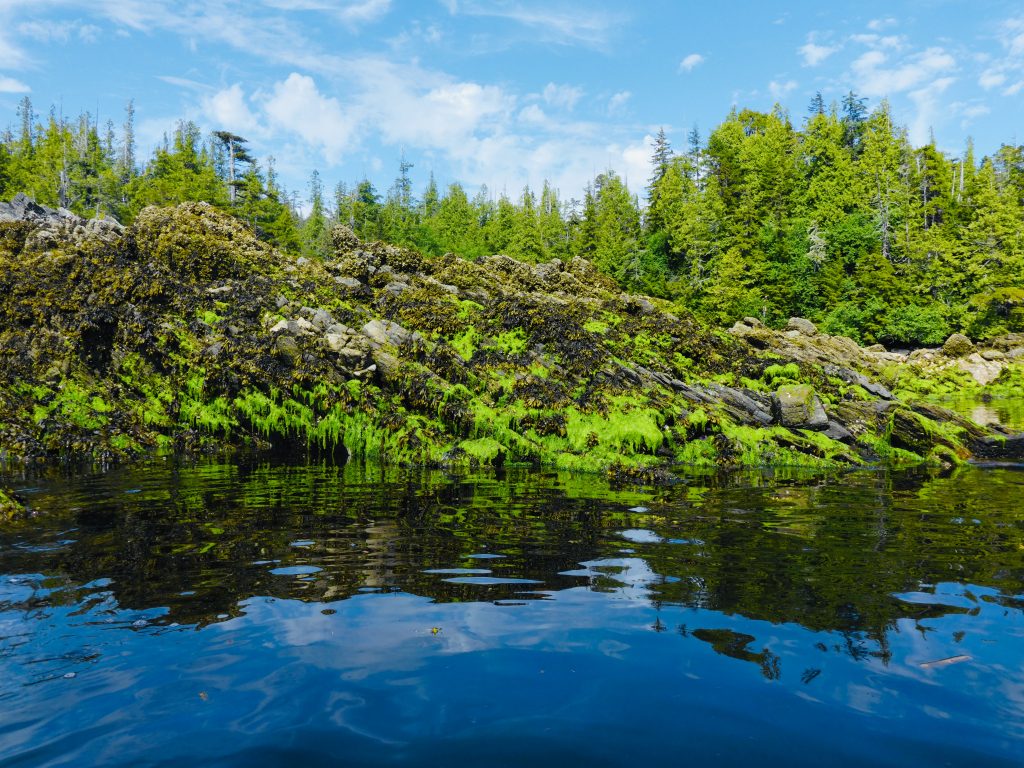
In Foggy Bay
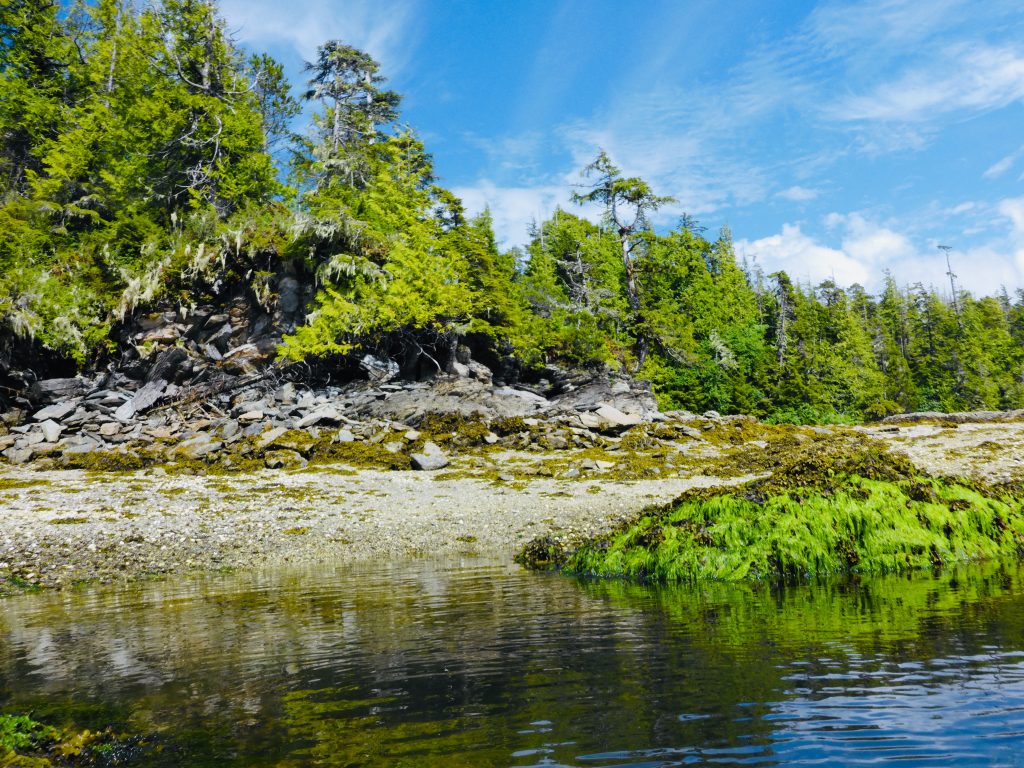
In Foggy Bay
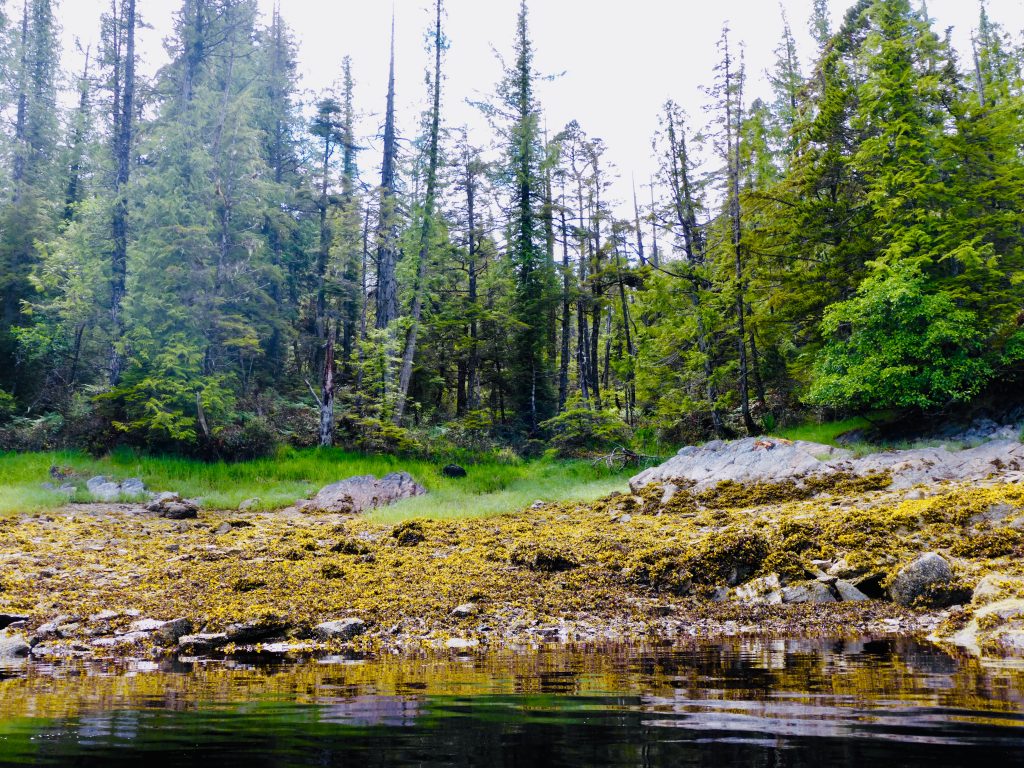
In Foggy Bay

In Foggy Bay
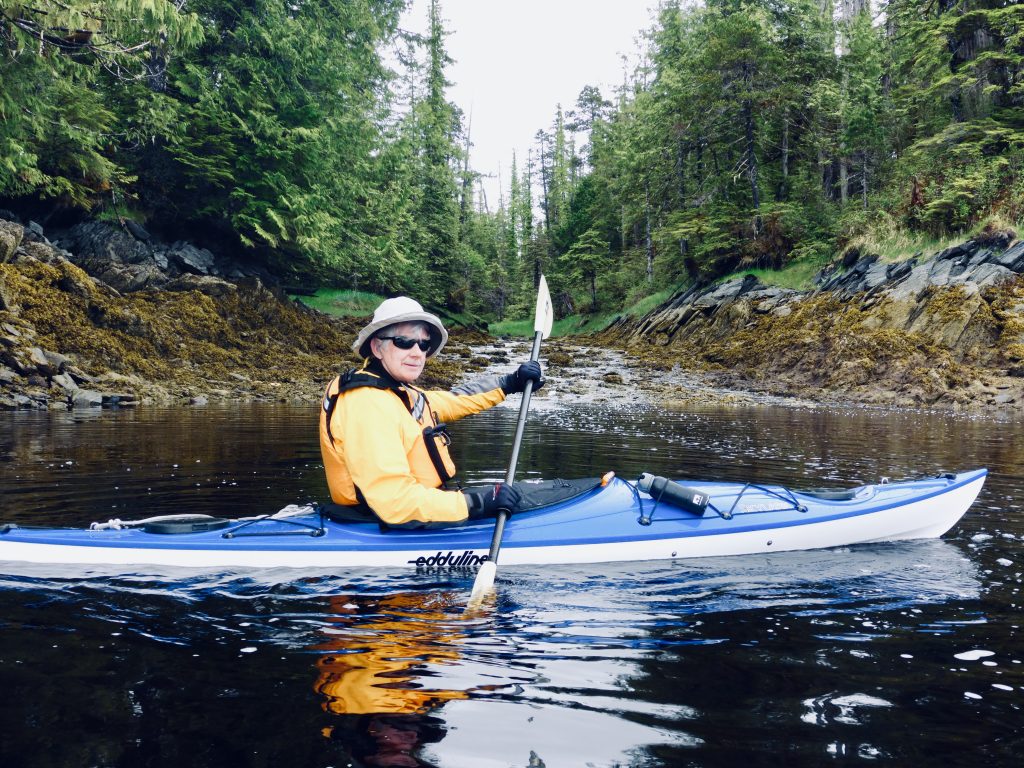
Sam Farmer, Foggy Bay
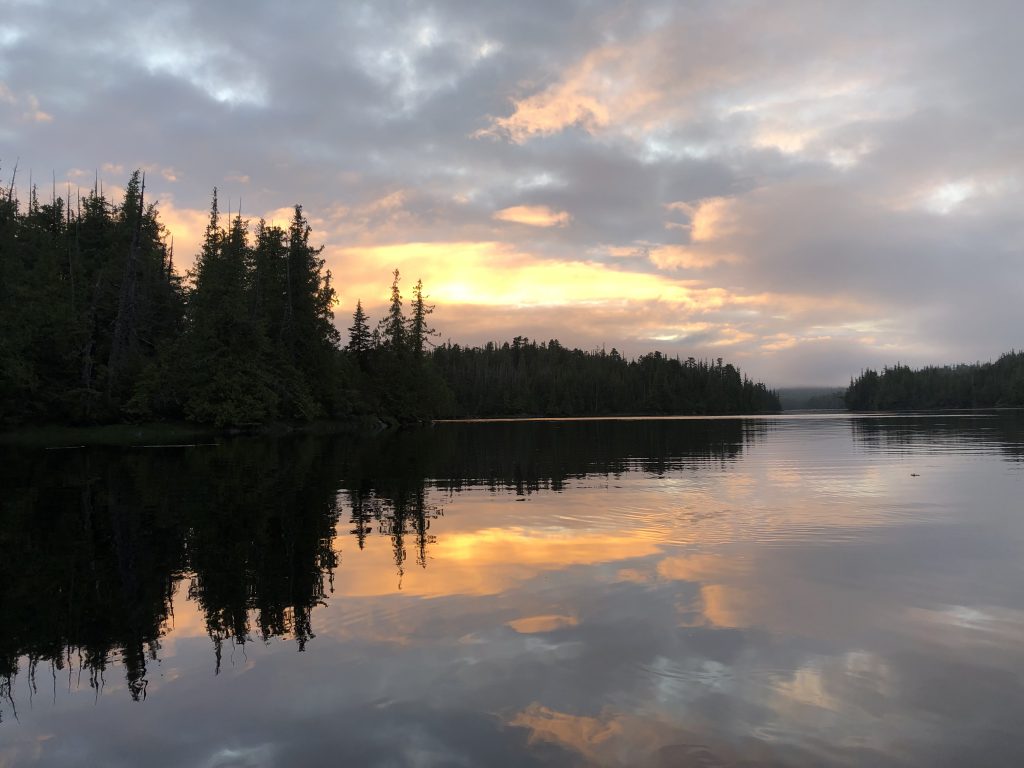
Sunset at Foggy Bay anchorage
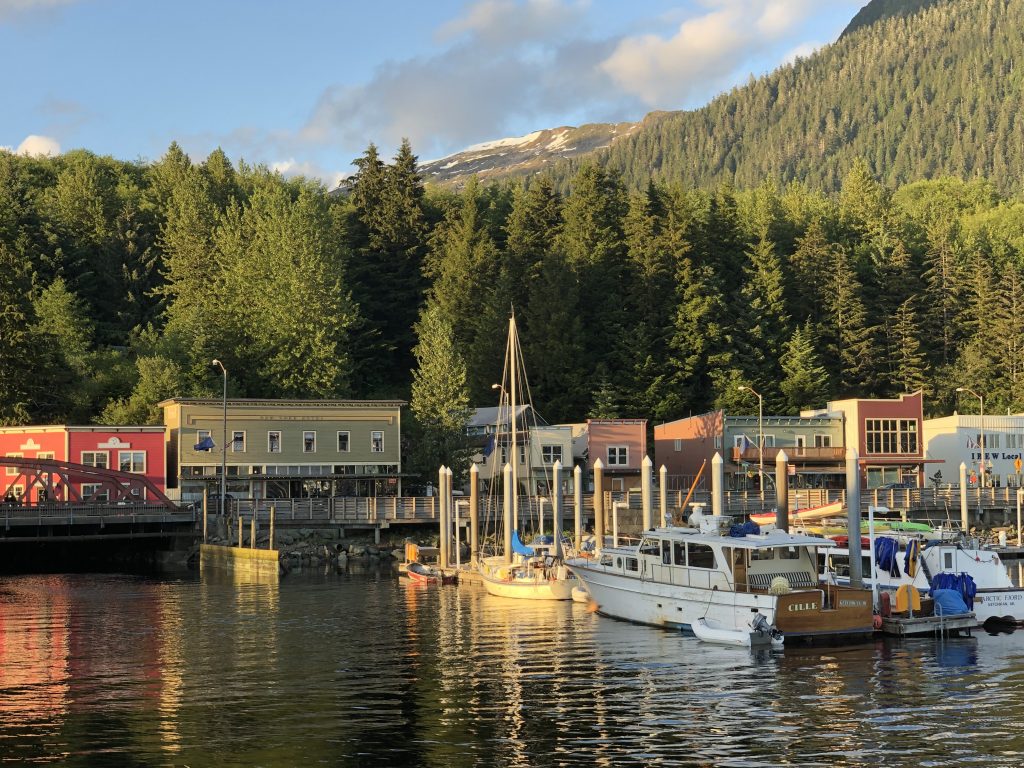
Ketchikan
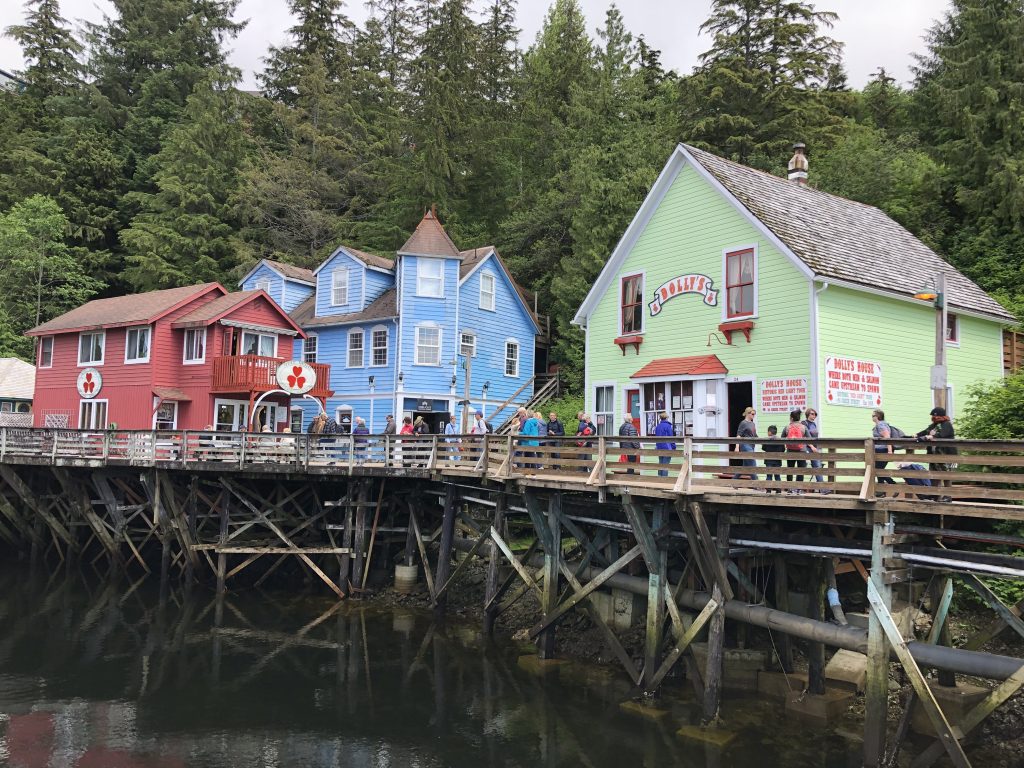
Why people visit Ketchikan
Kumealon Bay to Prince Rupert
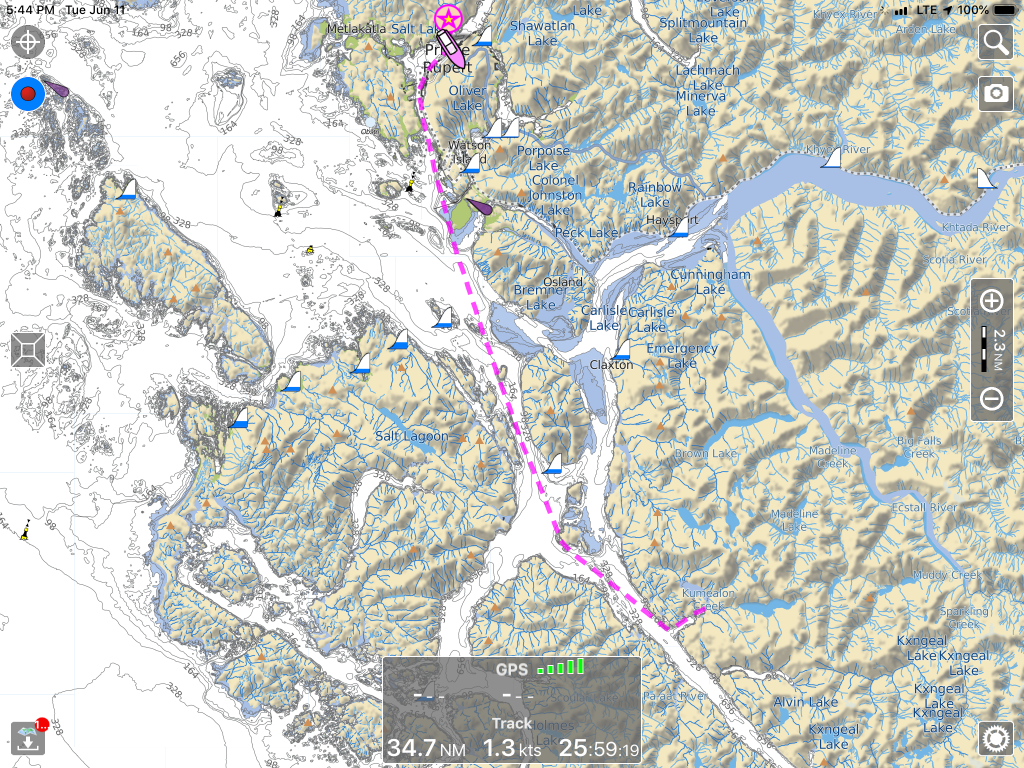
MAN, DID IT RAIN LAST NIGHT. We were anchored in Kumealon Bay, after a slow slog up Grenville Channel from Hartley Bay, and the downpour sounded like someone was pouring gravel on Osprey’s roof. The recaulking work I did on my roof rails earlier this spring proved effective, however, and we had a dry, comfortable night—lulled to sleep finally by the sound of the rain and the gentle rocking of the boat.
Now we’re in Prince Rupert, and after a day of boatkeeping—laundry, showers, tidying—it’s raining again. That’s OK. I’m equipped for it, mentally and gear-wise. This warm, dry little boat is actually a really cool way to observe this very wet place. The crew may require some persuading on this point.
Tomorrow we cross Dixon Entrance into U.S. waters. We have already cleared Customs using the new CBP Roam app, and plan to go as far as Foggy Bay.
Along the way here:
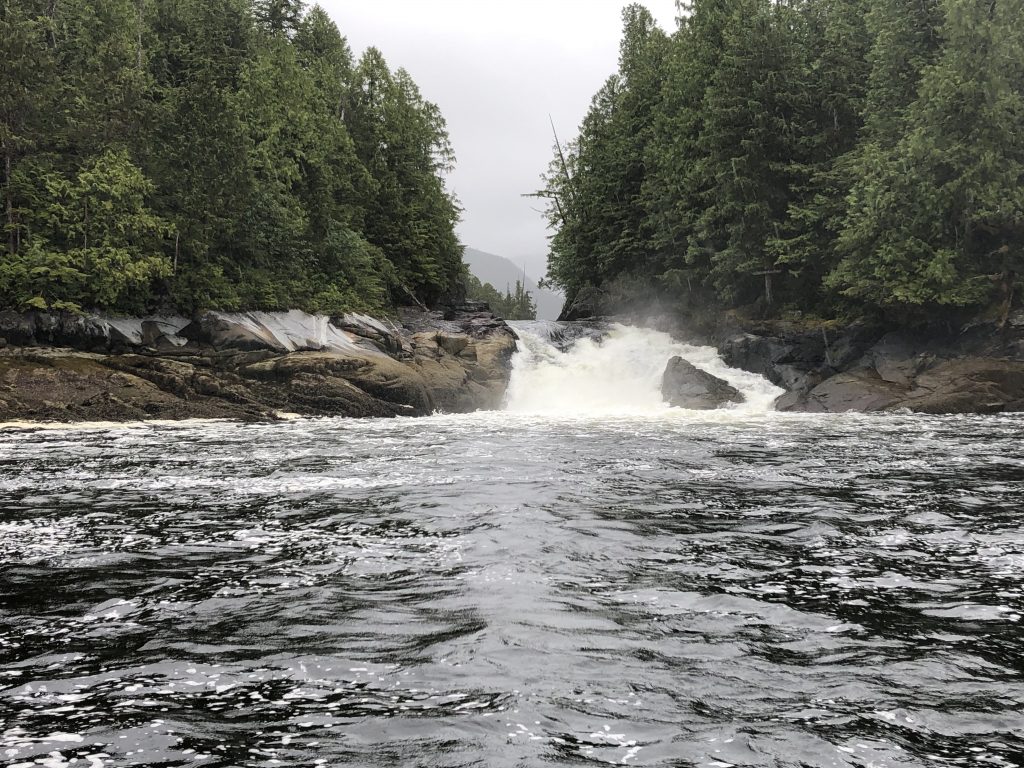
Verney Falls

Light in Grenville Channel
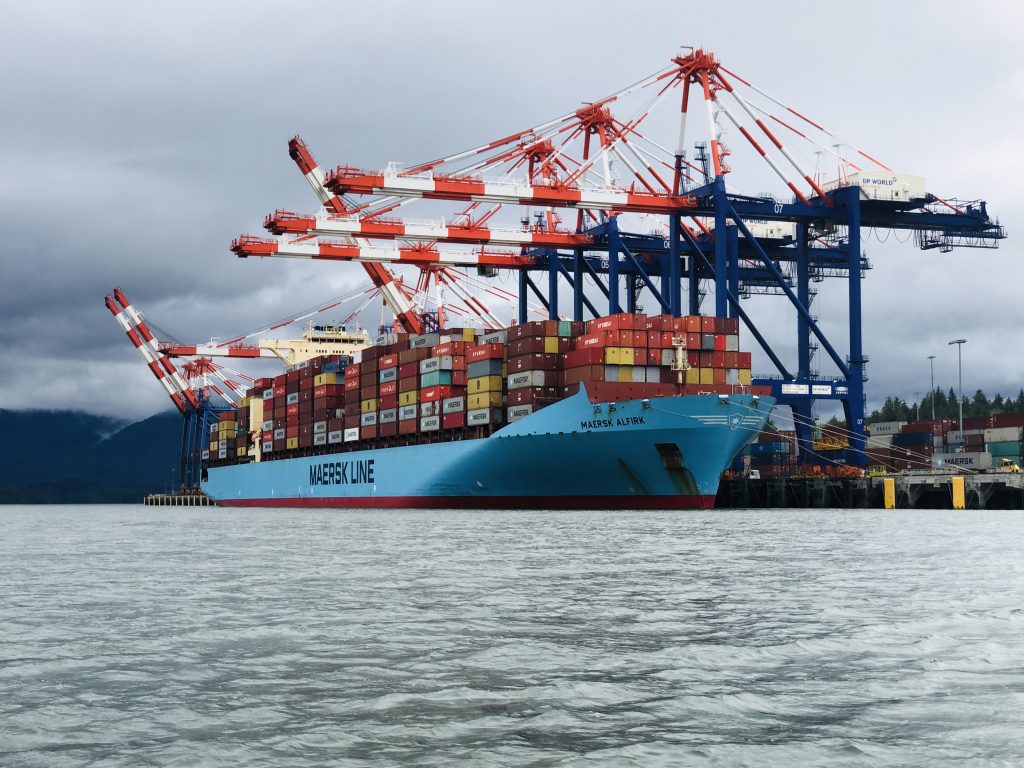
Container ship, Prince Rupert
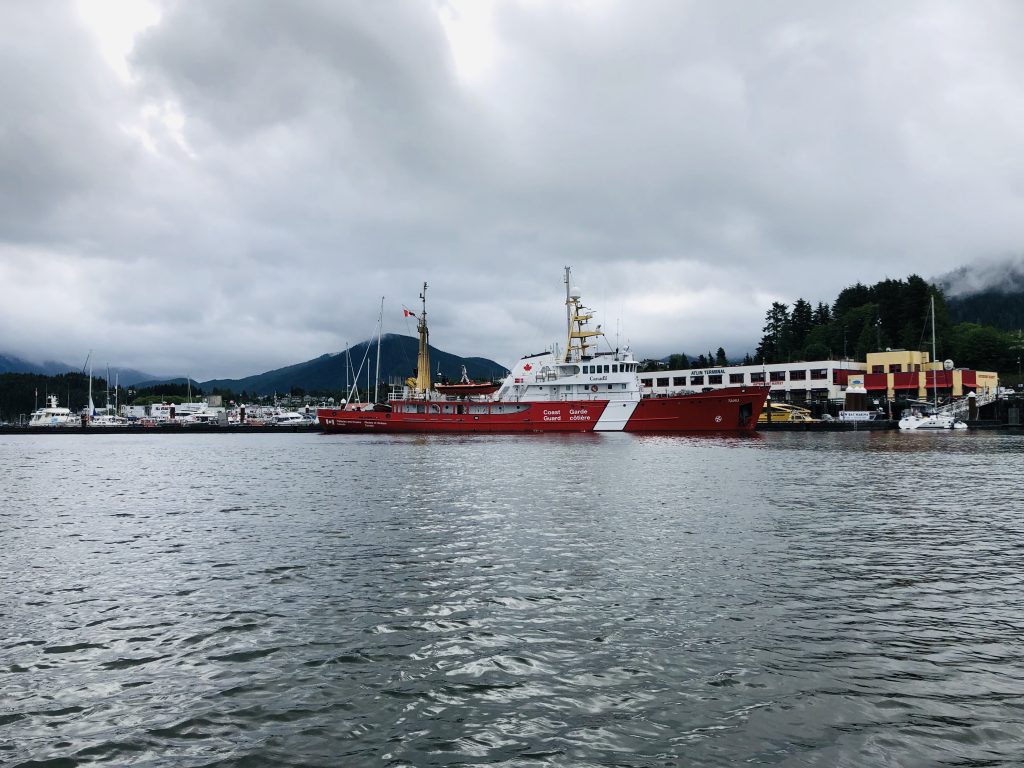
Canadian Coast Guard vessel, Prince Rupert

Sam tying up, Prince Rupert
Three knots for sailors
Sam Farmer demonstrates three essential knots for mariners:

Sheet bend
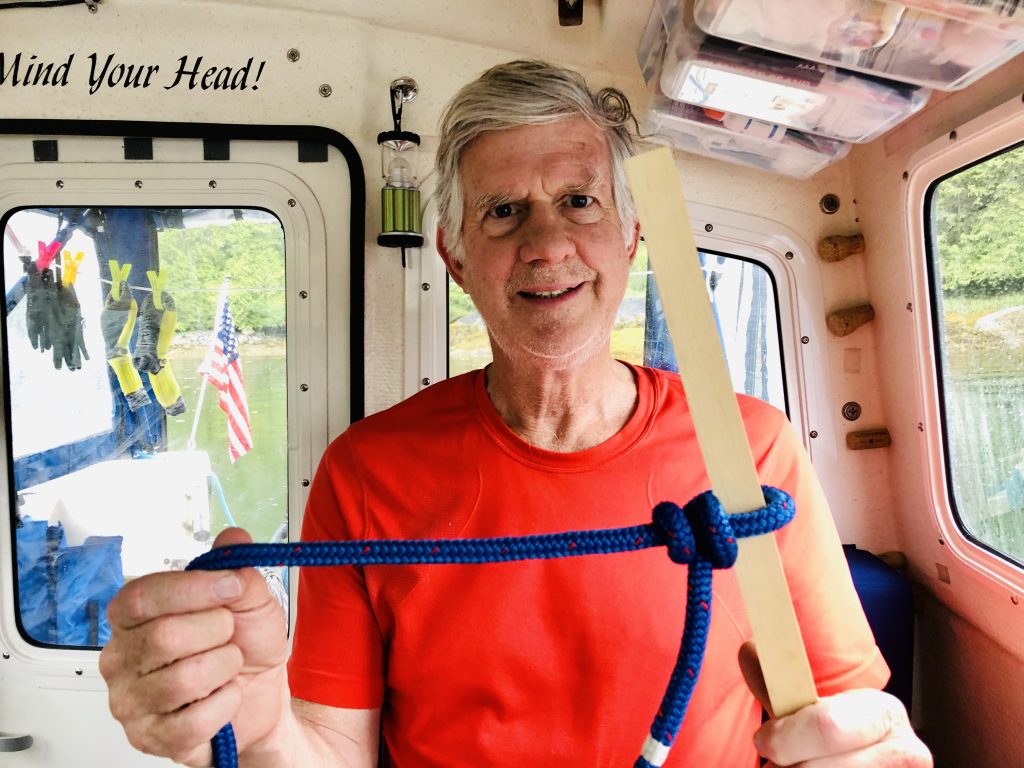
Buntline hitch

Bowline
Dead in the water at Hartley Bay
[contact-form][contact-field label=”Name” type=”name” required=”true” /][contact-field label=”Email” type=”email” required=”true” /][contact-field label=”Website” type=”url” /][contact-field label=”Message” type=”textarea” /][/contact-form]
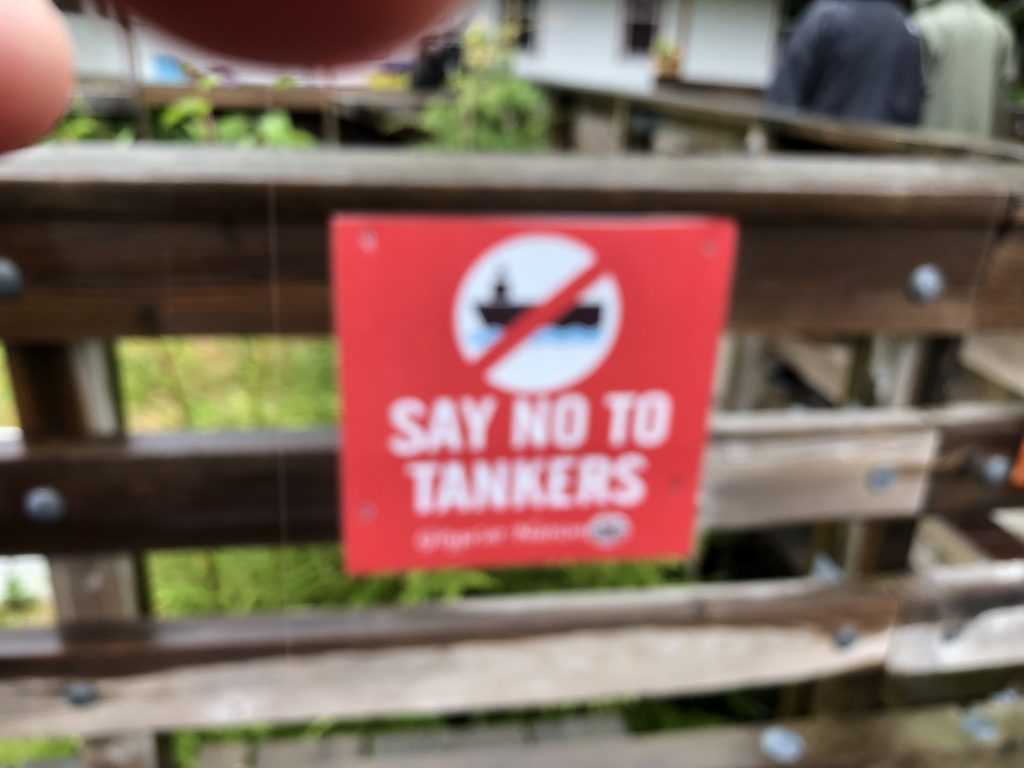
THERE WAS A TACO PARTY at the Hartley Bay dock this afternoon, where a half-dozen boaters are waiting for gas. The 2019 Waggoner Cruising guide alleges fuel is sold weekends at this neat little First Nations village on Douglas Channel. We all believed the guide book—and now we’re waiting for tomorrow, Monday, when it is said gas sales will resume.
This is the last gas stop on the way north to Prince Rupert, and none of the boaters stuck here (some who have been waiting here since yesterday) has enough fuel to proceed.
It doesn’t matter. Sam and I planned to dock here overnight anyway, and we’re tied up right next to the taco party, and have been invited to a strip steak party later this afternoon.
While we waited for gas and steak, we went for a walk around the village. Hartley Bay is home to the Gitga’at Nation. The Gitga’at people Tsimshian, and traditionally a matrilineal society. Clans affiliation, crests, names, and resource gathering areas are inherited from the mother’s side of the family. The village is located at the mouth of Douglas Channel, about 630 kilometers north of Vancouver and 145 kilometers south of Prince Rupert.
According to the Gitga’at website, “The wellbeing of their people is intricately related to the health of their lands, waters, and resources, and the community continues to work to sustain their abundance and richness.” We see some evidence of that in the “Say No to Tankers” signs.
The village’s buildings are connected by boardwalks, and there are no cars—just golf carts and ATVs. This Sunday there are few people on the boardwalks. Fewer than 200 Gitga’at live in Hartley Bay year round, another 450 or so live off-reserve. The only two public buildings opened this Sunday are the little Emmanuel United Church and the community center. The door to the church was open. Worship services are held year round, and there were flowers at the altar and hymnals in each pew.
The door to the community center was open, too. There was a sign, “No restrooms. Please don’t ask,” a reminder that rural public utilities are often limited. There are no public restrooms on the dock or anywhere in town that we could find. So we headed back to the boat.
I haven’t blogged since Alert Bay, and in those five days we have traveled 327.7 nautical miles—for a total of 652.6 NM since the trip began. We have 178 more to go before we reach Ketchikan.
Some of the sights we’ve seen along the way include:
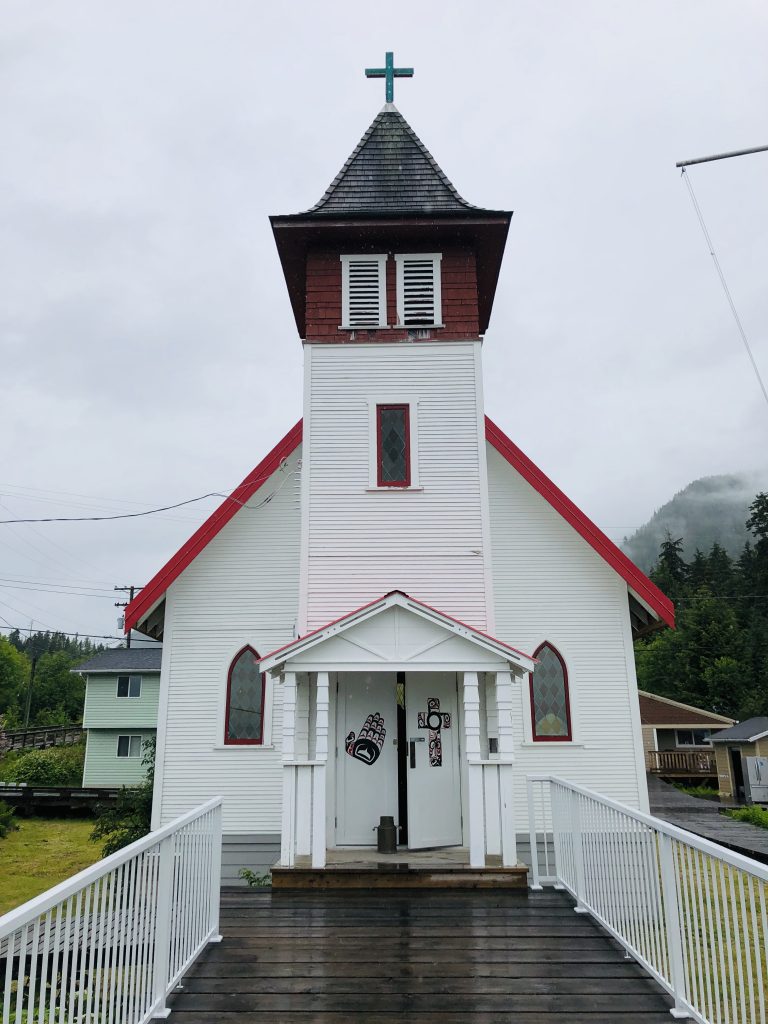

The door to the community center was open. There was a sign—“No restrooms. Please don’t ask”—a reminder that services are generally limited in the small villages along the Inside Passage. There are no public restrooms on the dock or anywhere in town that we could find. So we headed back to the boat.
I haven’t blogged since Alert Bay, and in those five days we have traveled 327.7 nautical miles—for a total of 652.6 NM since the trip began. We have 178 more to go before we reach Ketchikan.
Some of the sights we’ve seen along the way include:
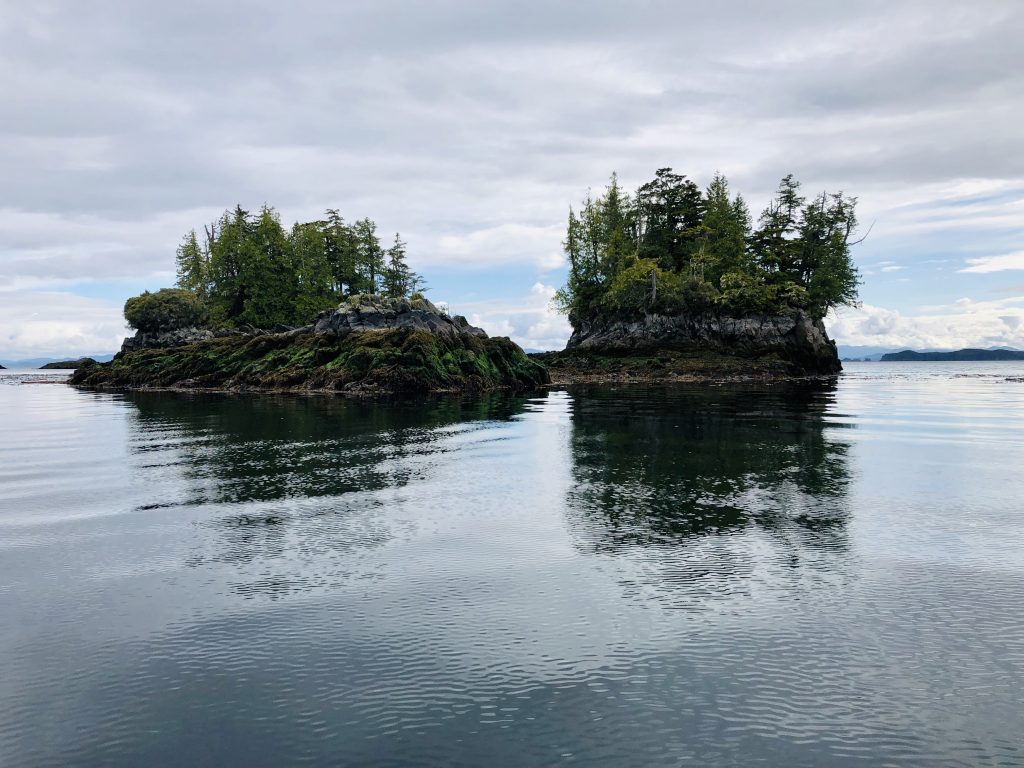
Islets in Queen Charlotte Sound
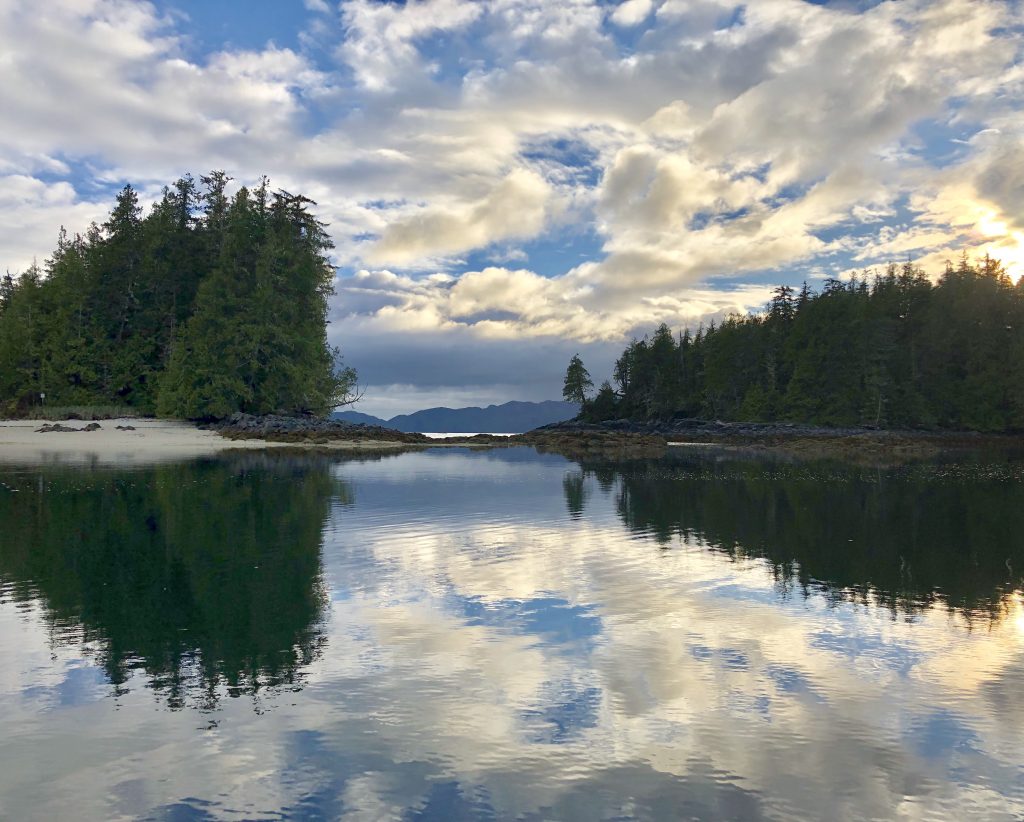
Our anchorage at Fury Cove
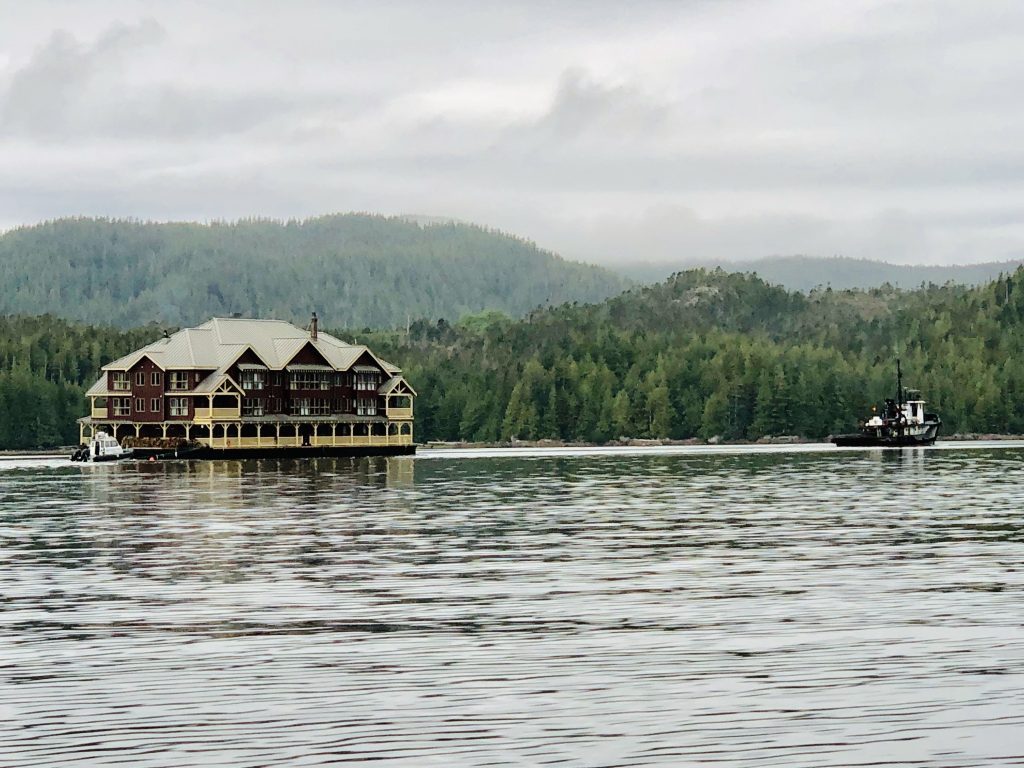
A huge three-story lodge being towed north through Lama Passage, near Bella Bella
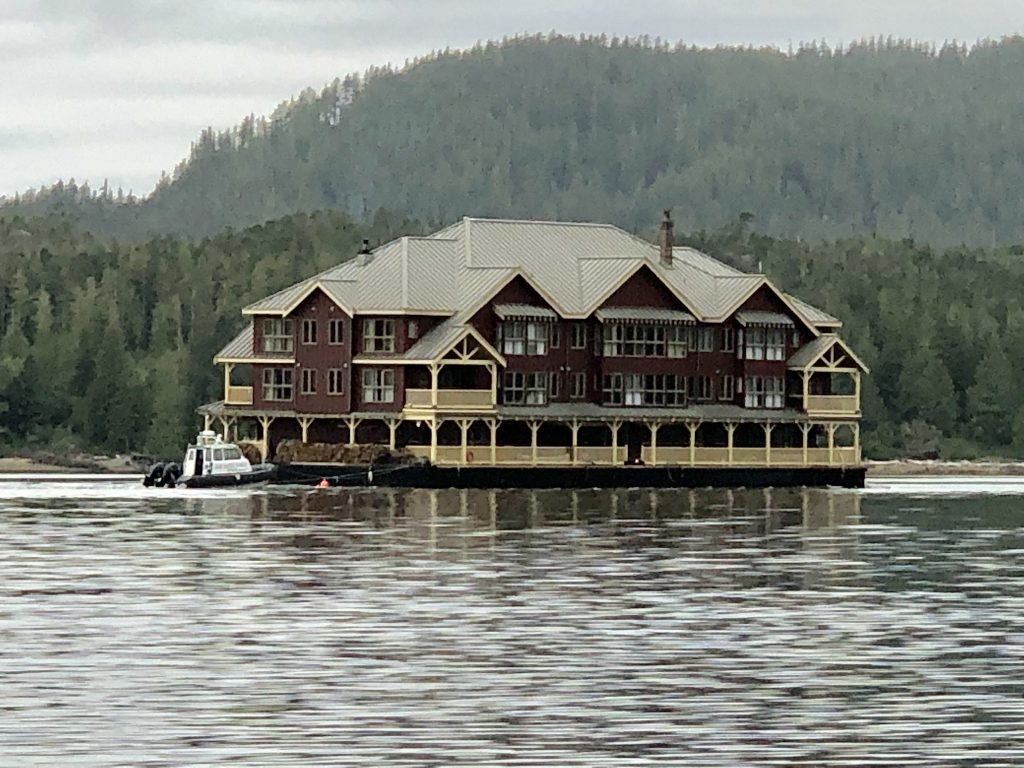
Look at the size of this sucker
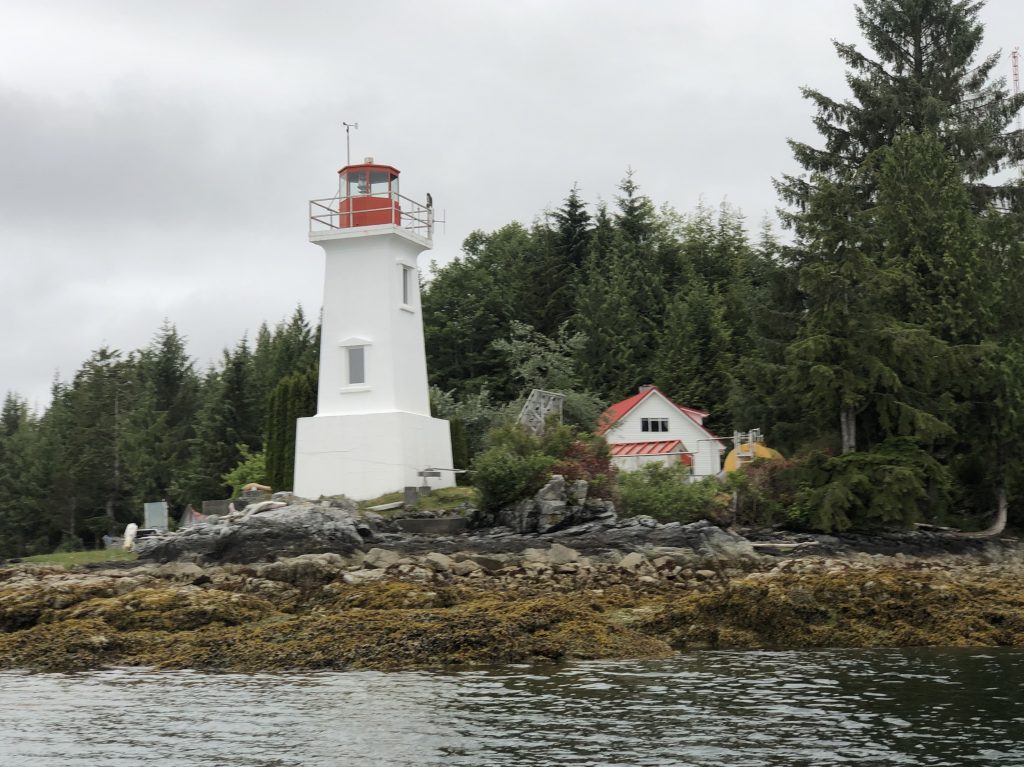
Lighthouse at Dryad Point
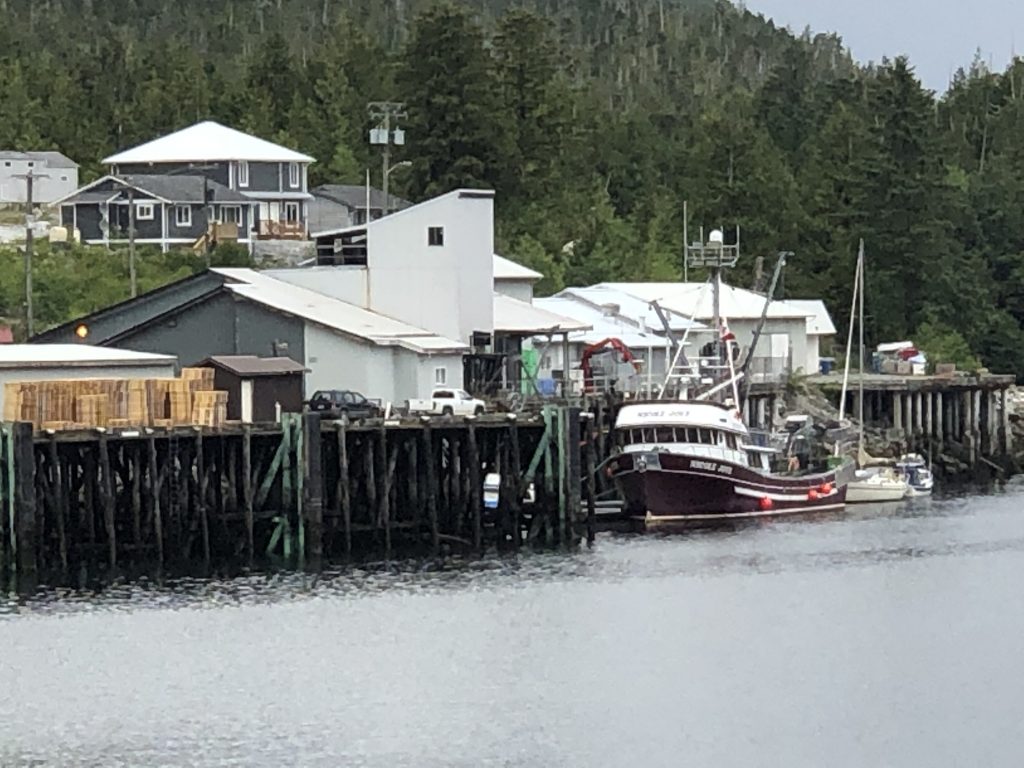
Public dock at Klemtu


Totems, in Klemtu longhouse
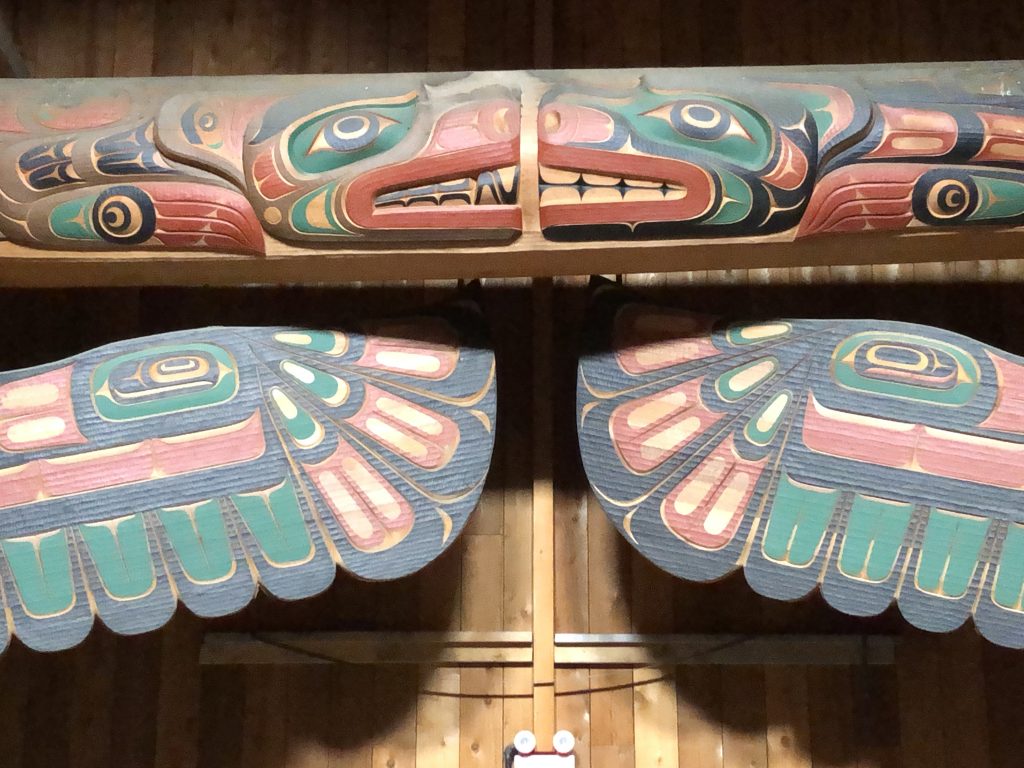
Detail
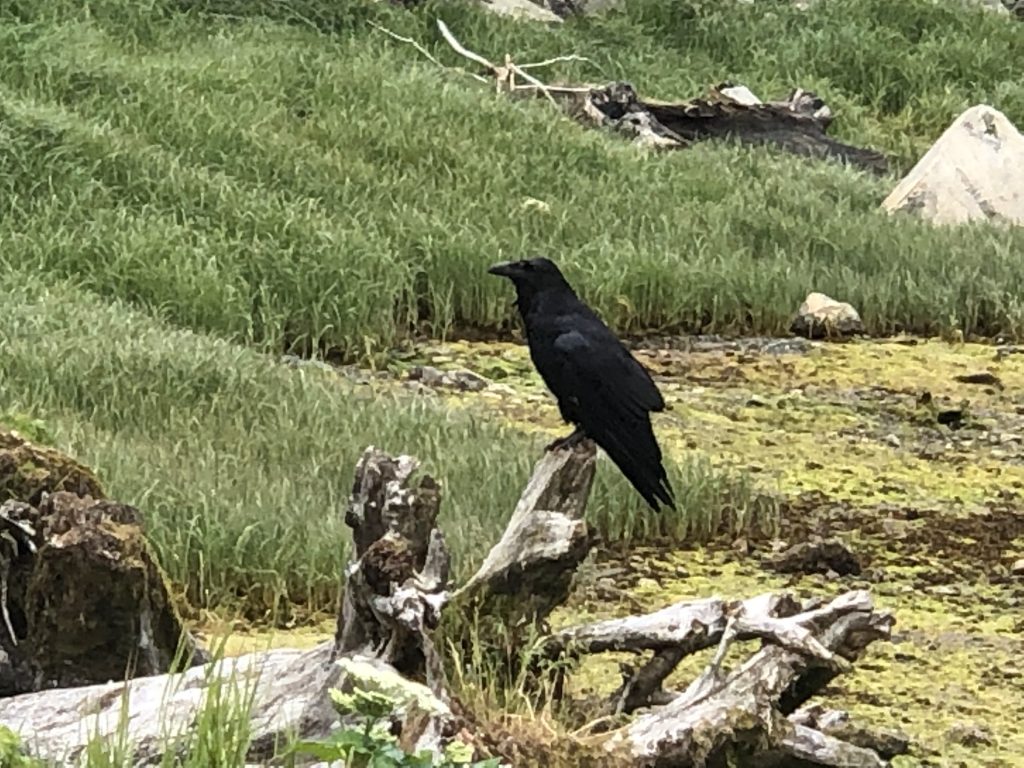
Our first raven
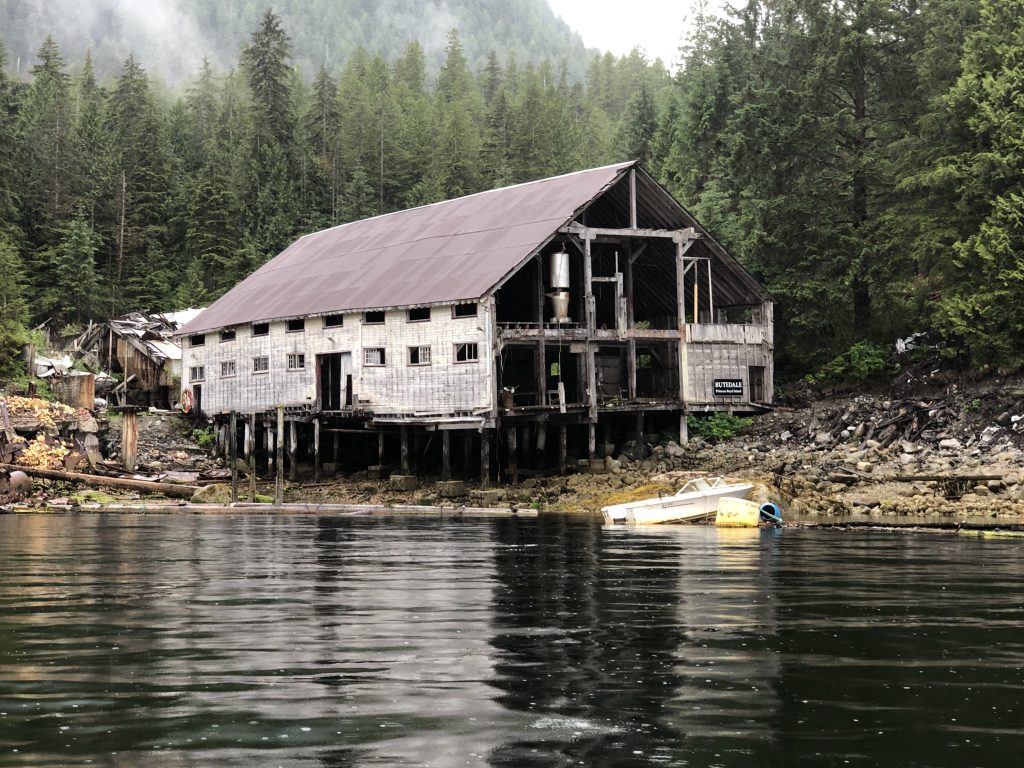
Abandoned cannery at Butedale
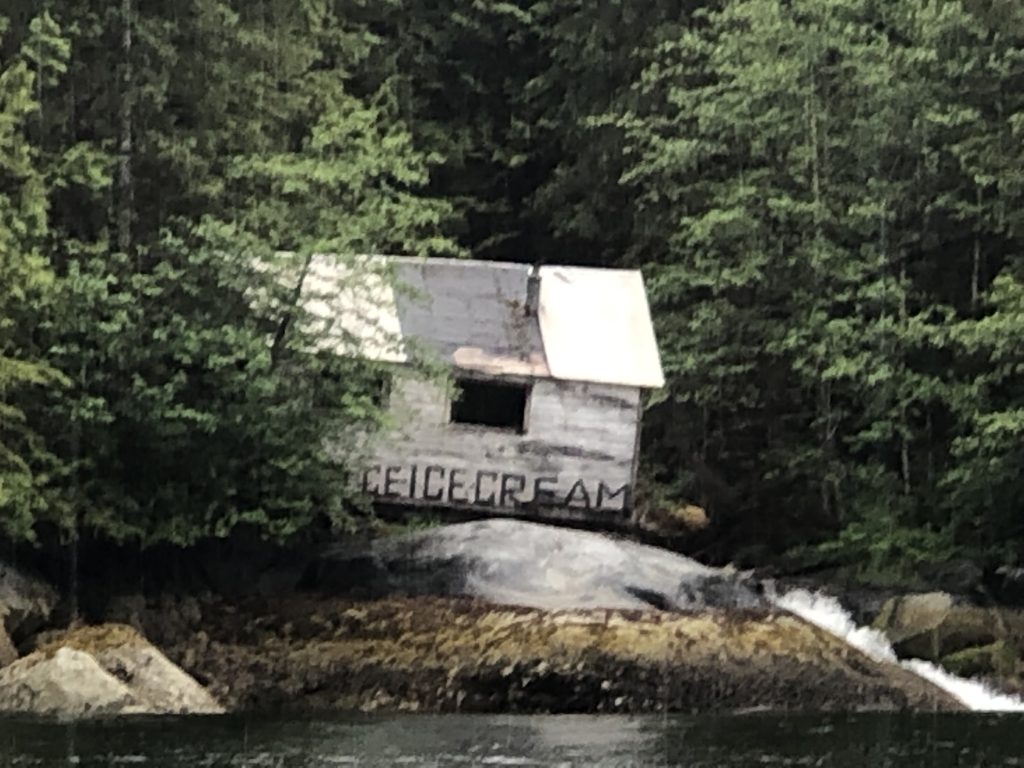
Melting away

Butedale Passage
Desolation Sound to Alert Bay
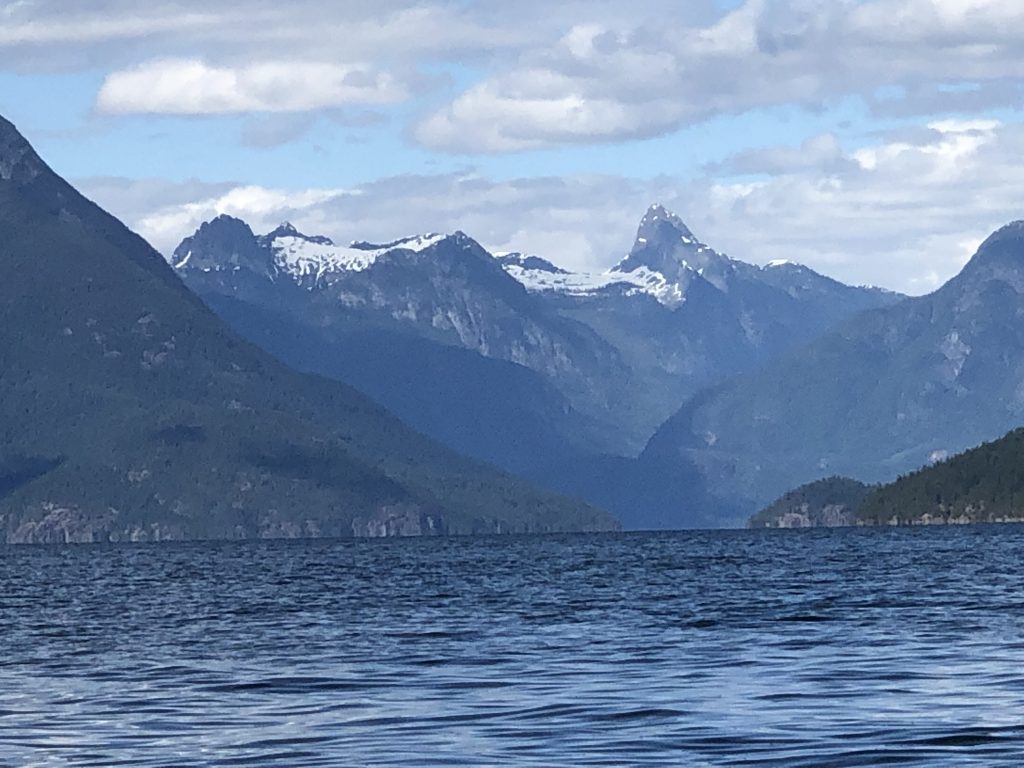
In Desolation Sound
IT WAS 88 NAUTICAL MILES from Squirrel Cove, in Desolation Sound, up windy Johnston Strait, to Alert Bay. On the way to the First Nations fishing town, we passed three large salmon net pens, owned by Norwegian aquaculture companies.
Aboriginal people have been fishing these waters for hundreds of years, and people in Alert Bay believe the net pens threaten the environment and their livelihoods.
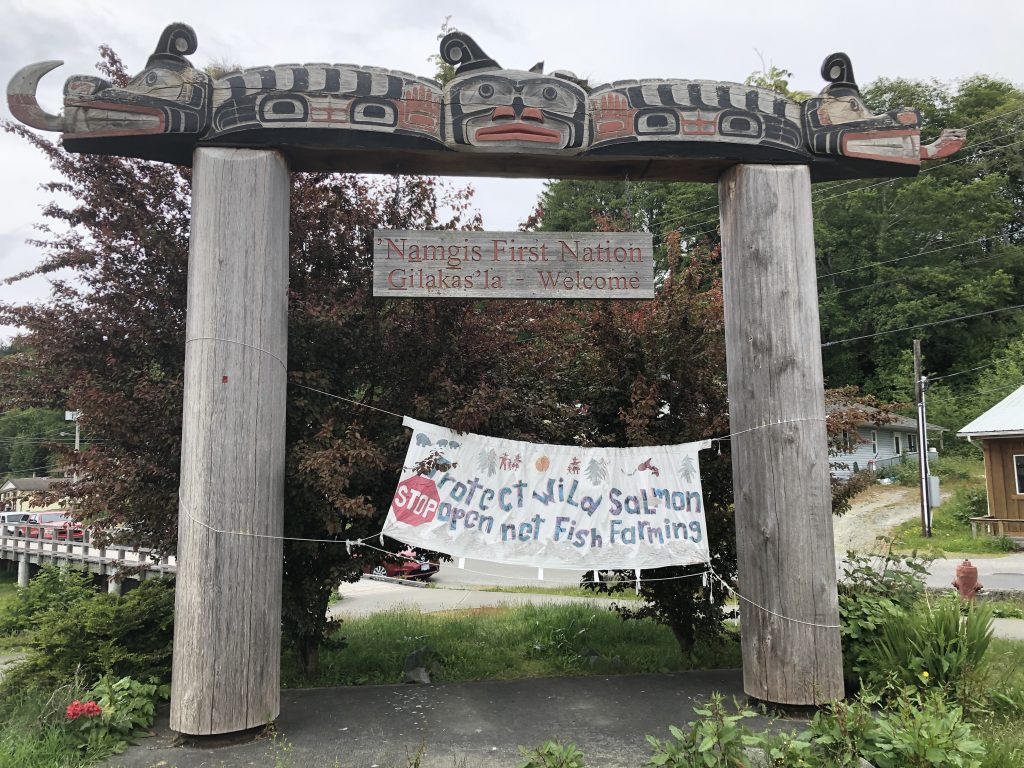
Alert Bay
During breakfast at the Bayside Grill, where we ate local halibut and chips the night before, I met a friendly man named Art Shaughnessey. Art grew up in Alert Bay, and his family’s last name was Maxwa (he has it in his license plate) before the authorities changed it, a hundred years or so ago, to something they could pronounce. When Art grew up, he went off to become one of the first aboriginal members of the Royal Canadian Mounted Police.
In the time he served with the RCMP, Art never felt accepted, never felt like a member of the white boys’ club. But he toughed it out and stayed—for 35 years. Good for you, Art!
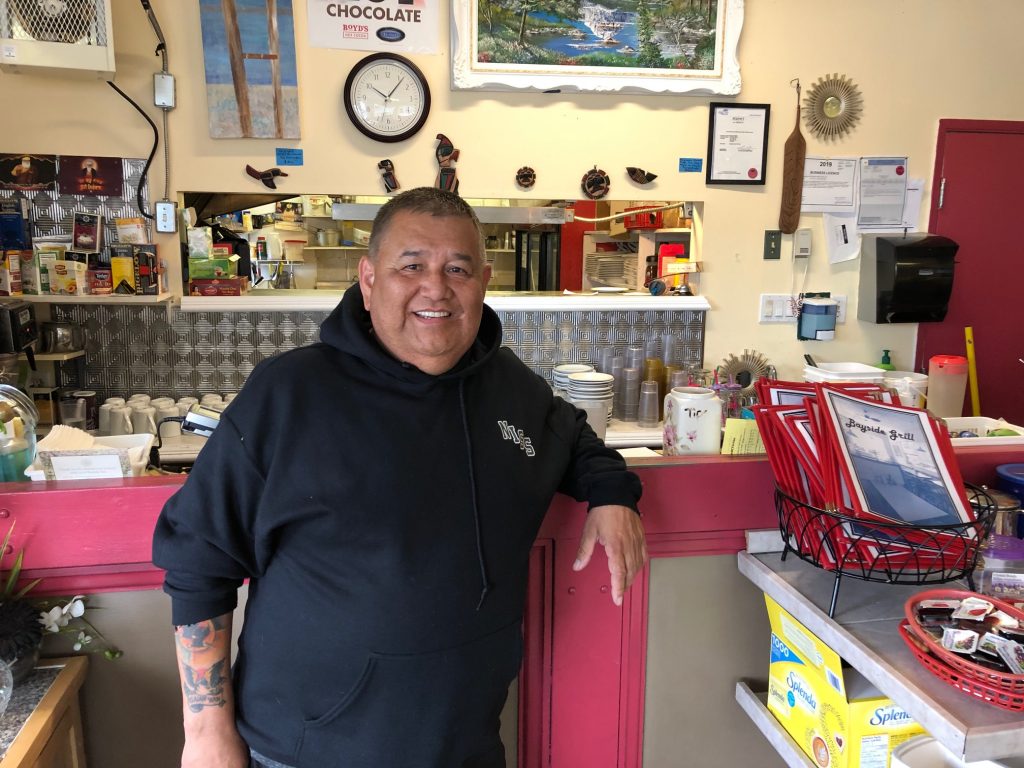
Art Shaugnessey
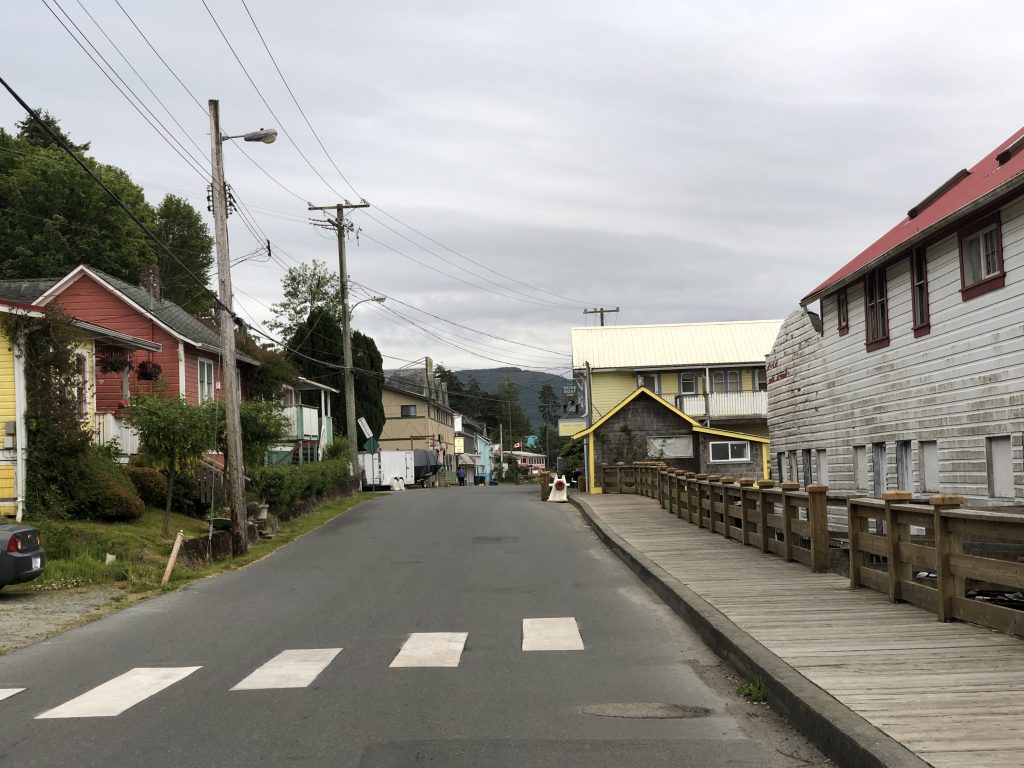
Fir Street, Alert Bay’s main drag
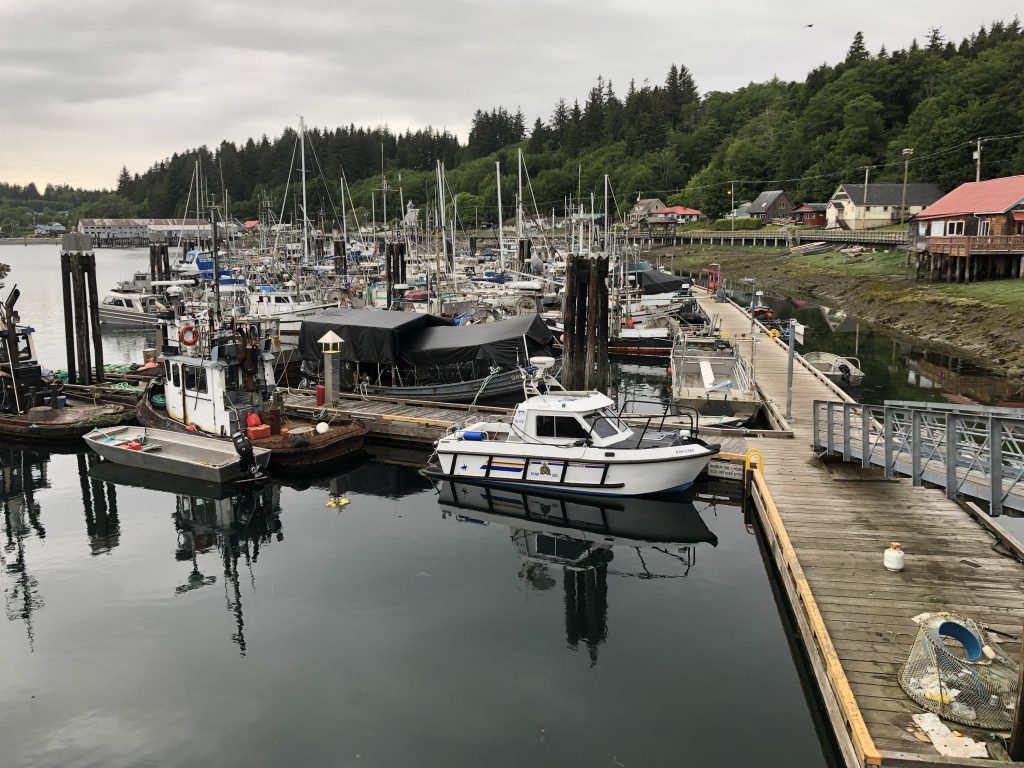
Fishing, for wild fish, is the main business in Alert Bay
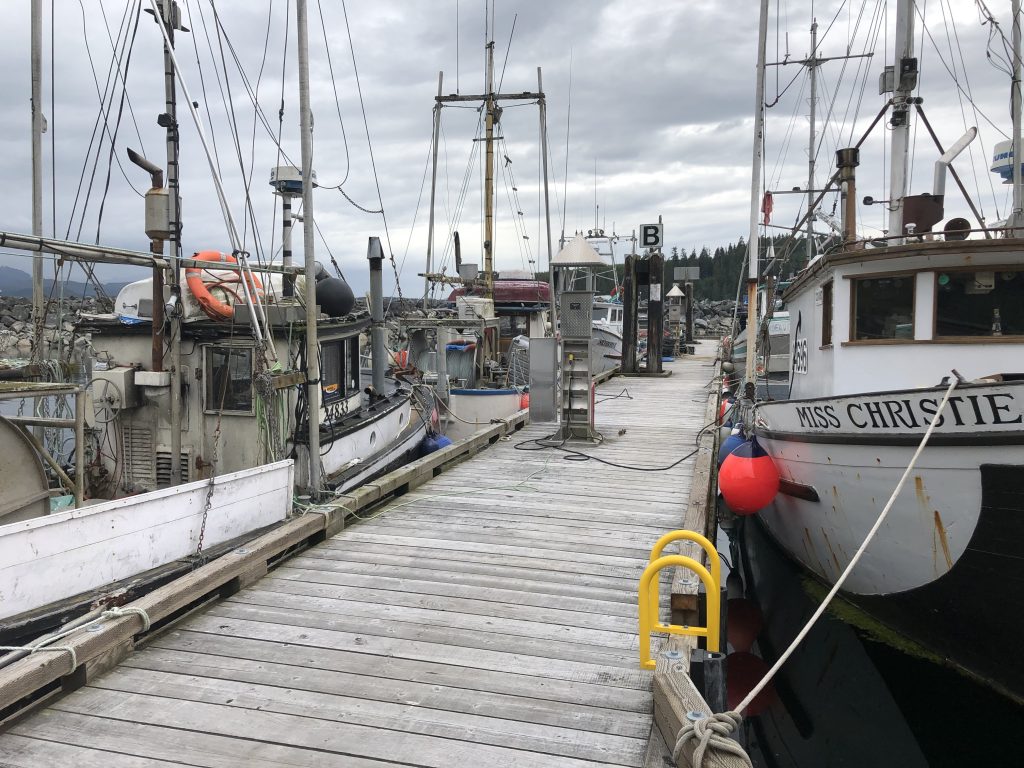
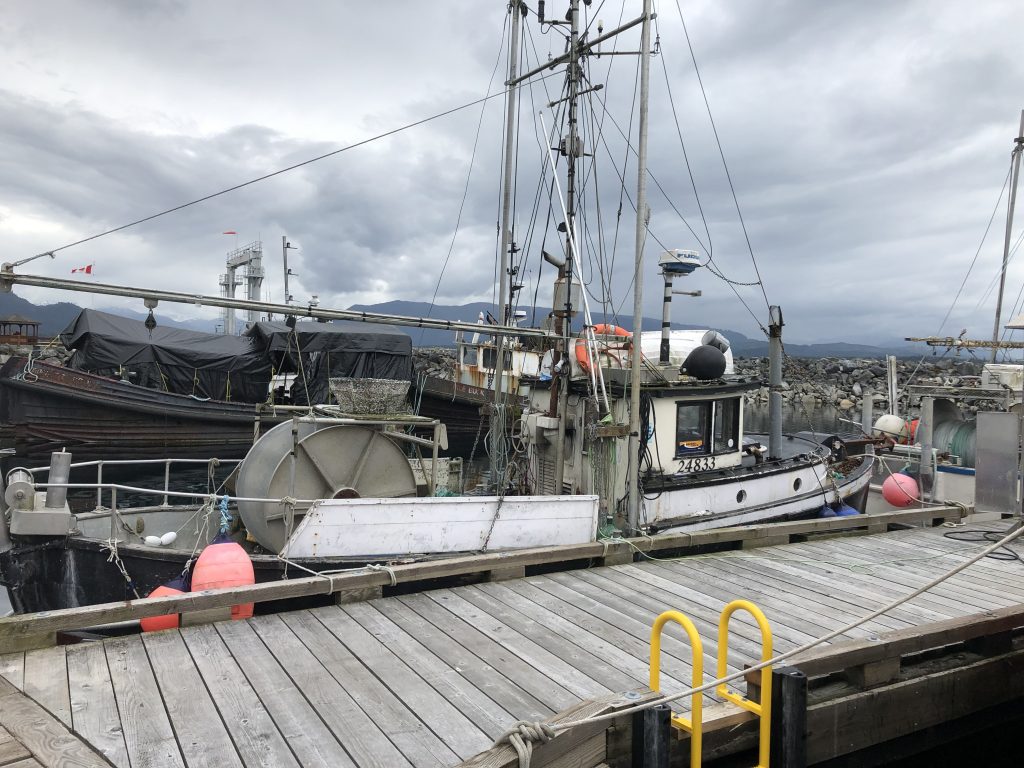
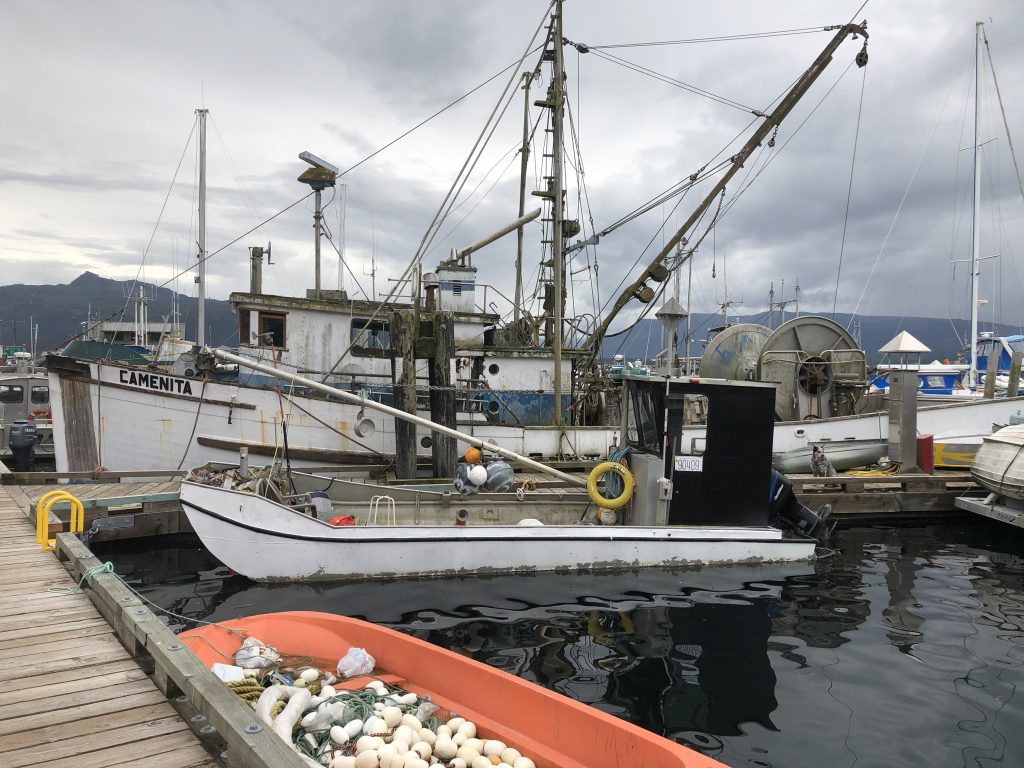
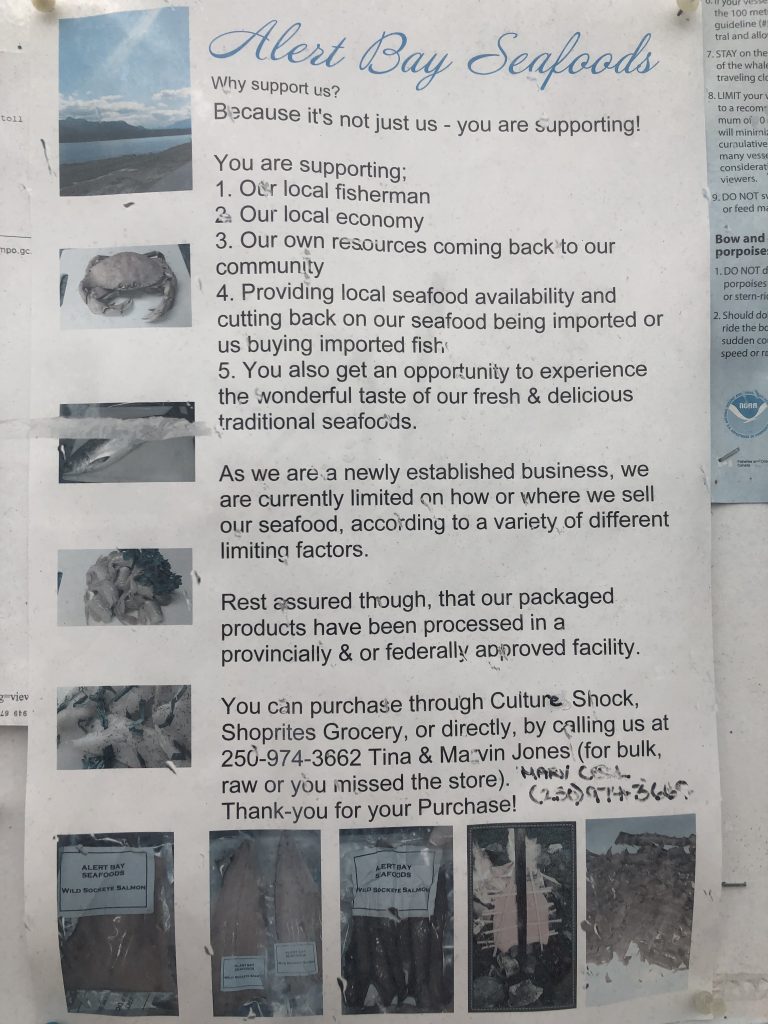
Night in Nanaimo
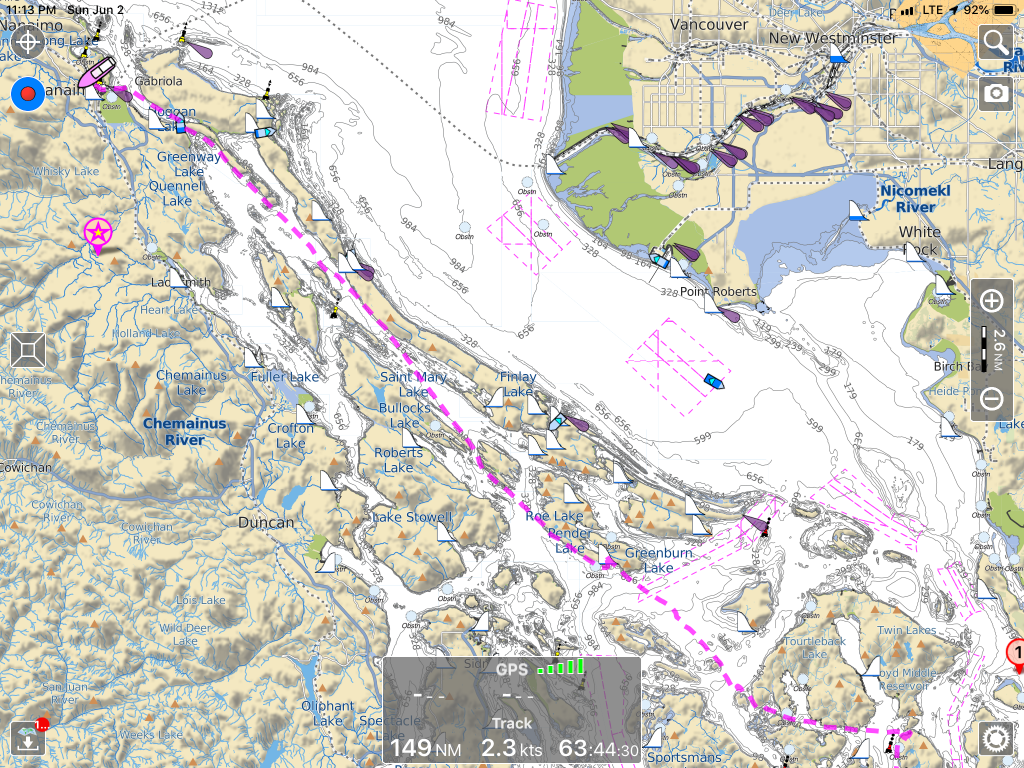
Blakely to Nanaimo
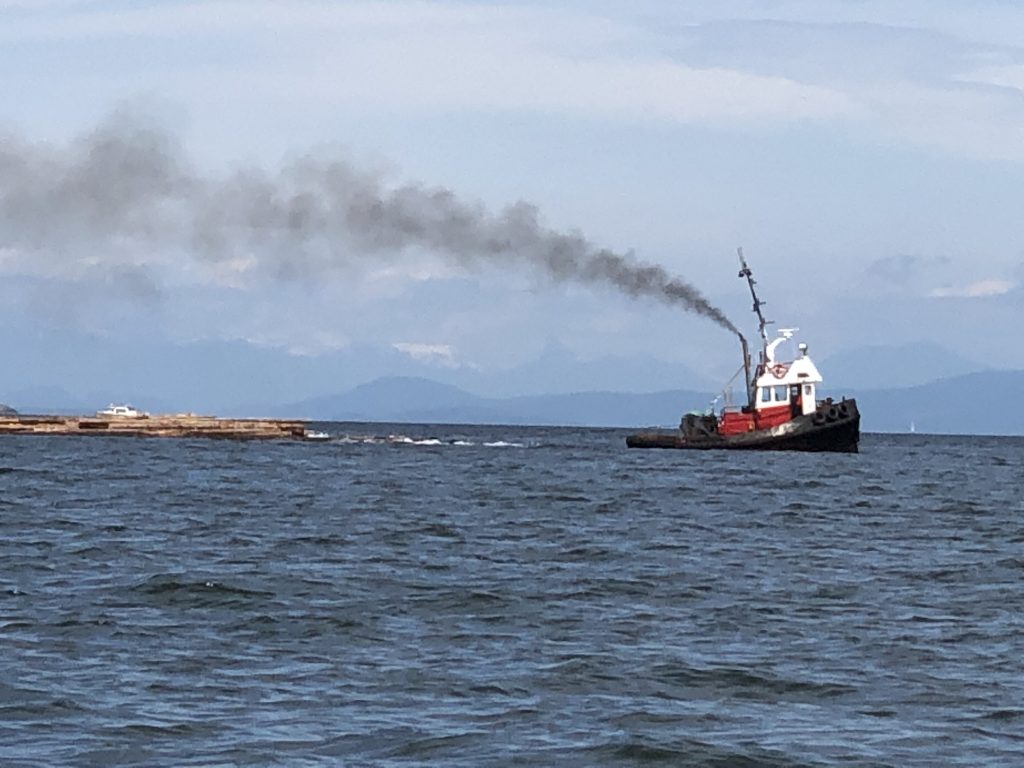
Tug and log raft
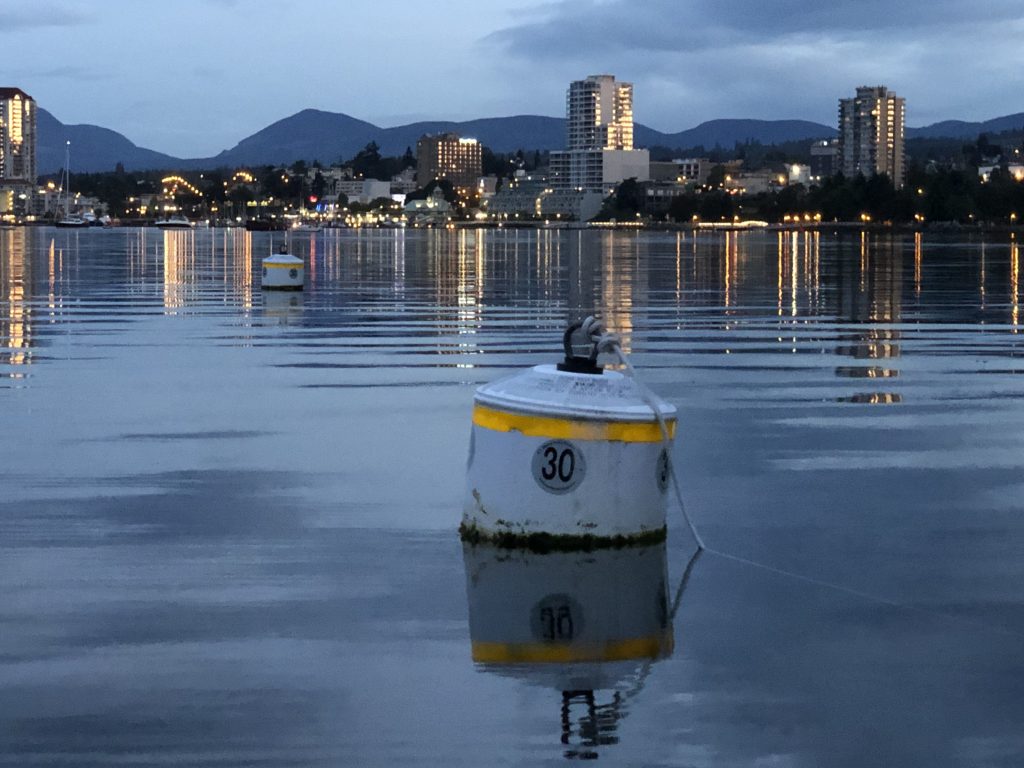
Lights of Nanaimo

Aaaack!
THIS IS LIKELY TO BE THE LAST night I’ll have an Internet connection for a while—and a good thing it is, because the wireless vultures have descended on me in force.
Great trip today from Blakely Island up to Nanaimo, where we gassed up. Then we moored in Mark Bay, on Newcastle Island, and went for a paddle. I showed Sam how to perform a bow rudder stroke; then I heard a big splash behind me and saw he had capsized. The water in Mark Bay was very warm, and Sam seemed to actually enjoy his involuntary dunking.
After dinner of Mountain House beef stroganoff, I sat down in the back porch, looking out across the bay at the lights of Nanaimo—and my iPad started ringing as Verizon started sending me bills for the past three days of service. It was supposed to be $5 a day for their travel plan, but somehow—they allege—I have already rung up $50 in charges.
Anyway, we’re heading out across the Strait of Georgia tomorrow, to a place where (I pray) the wireless vultures can’t find us. The weather forecast calls for light winds Monday morning, and with any luck we may make it as far as Desolation Sound.
I’ll be able to send short messages to this blog using my Garmin inReach satellite device, but no pictures and—hooray!—no cellular data!
Rough crossing to the San Juans
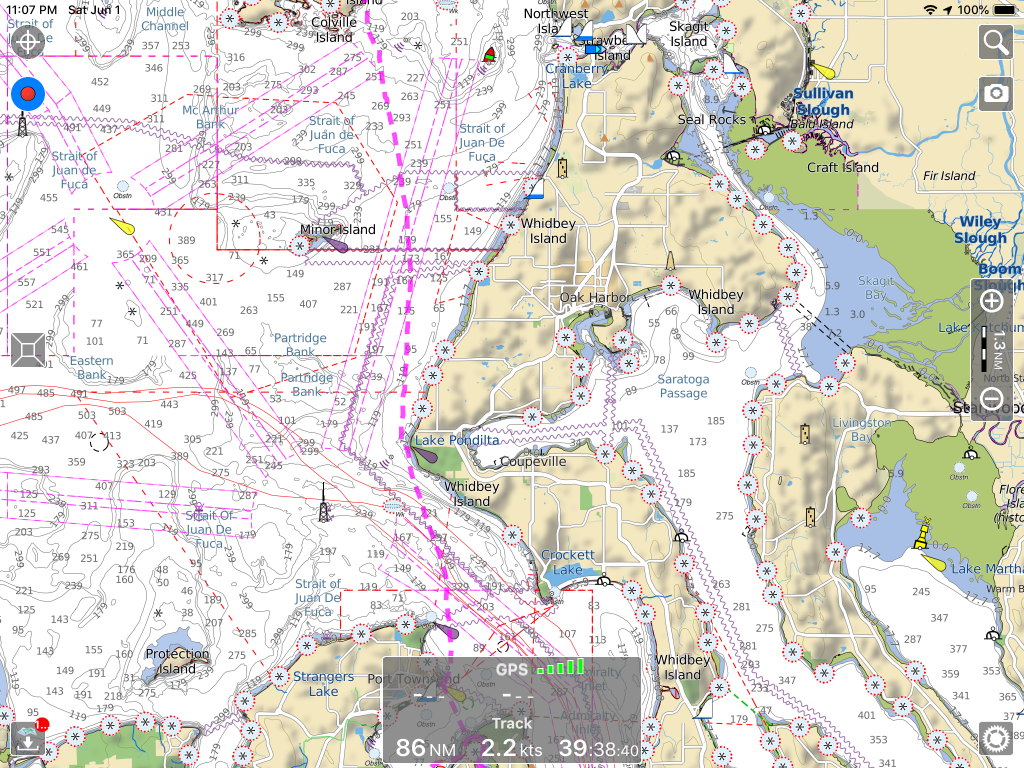
Port Townsend to Watmough Bay

Wild roses on Blakely Island
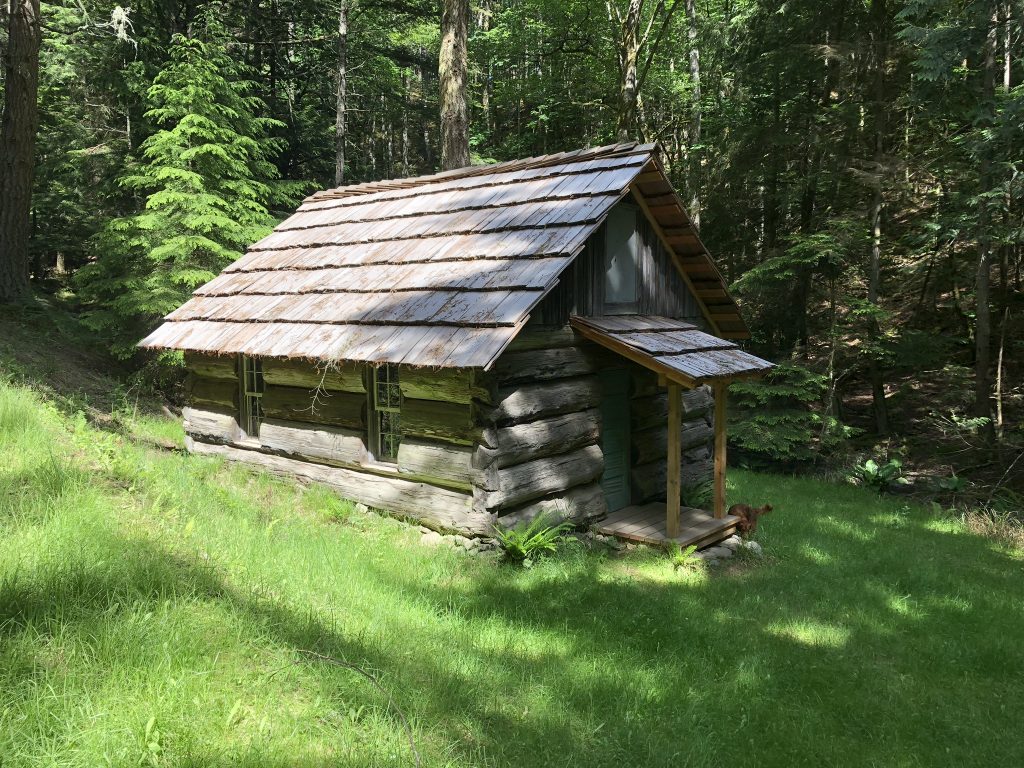
Blakely Island school house
SAM AND I LEFT PORT TOWNSEND at 7:30 this morning, and as soon as we got around Point Wilson, we were in nasty four- and five-foot seas blowing down the Strait of San Juan de Fuca from the Pacific. I was navigating without my reading glasses, and as we approached Partridge Point, on Whitney Island, I failed to notice the chart notation warning of kelp.
The water intakes on Osprey’s twin Tohatsu 50 engines clog easily, and before I could get out of the kelp bed, the overheating alarms on both motors started screaming. It took a couple of minutes to shut down the engines, get them lifted out of the water, clear the kelp from the intakes and get started back up—and then we were back in big, confused waves all the way to Watmough Bay on the south end of Lopez Island. Yipes!
From there it was smooth sailing through Lopez Pass up to Blakely Island, where we met Ellen, an old friend from grade school who has a vacation home there. Ellen gave us a tour of the big private island in her old Ford Explorer, with stops at the pretty lake which is the source of the island’s fresh water supply, and at an old one-room log school house. After a fantastic dinner, we’re heading off to bed. We plan an early start this morning for our entry into Canadian waters.
Andy’s wife was born this day, in 1956. Happy birthday, Marla Jean!